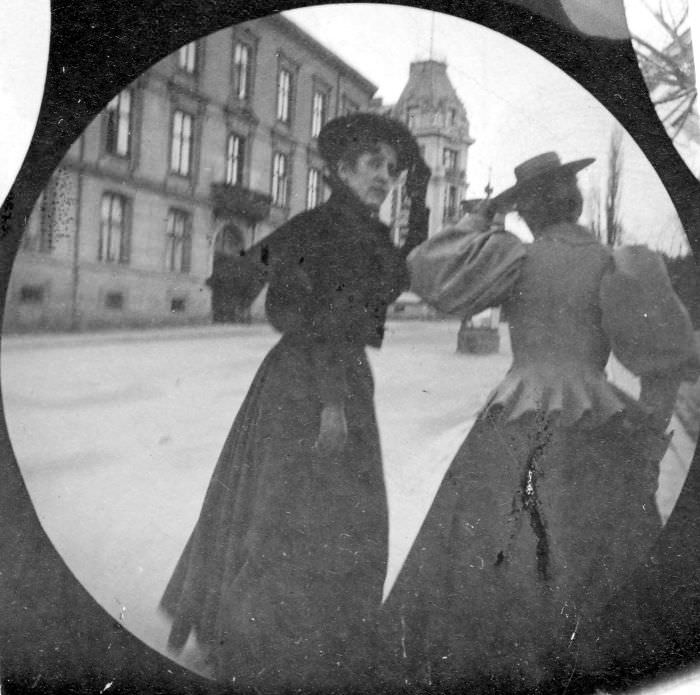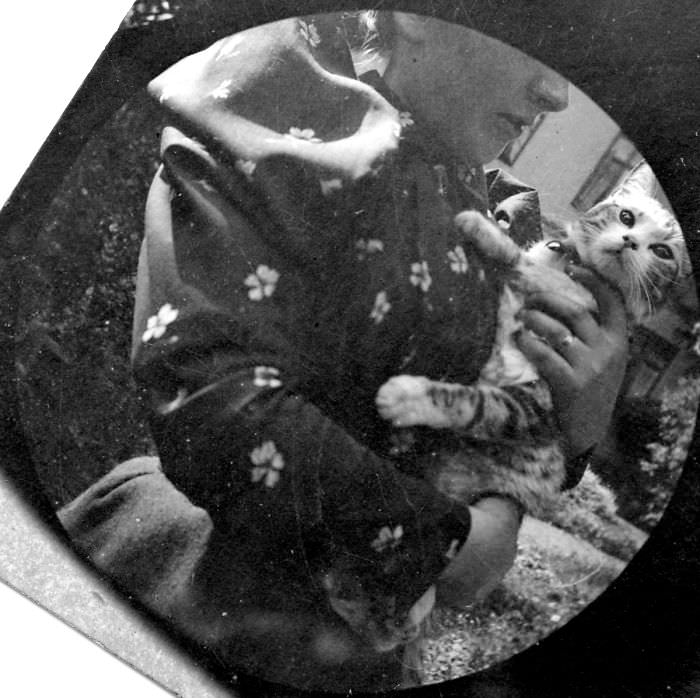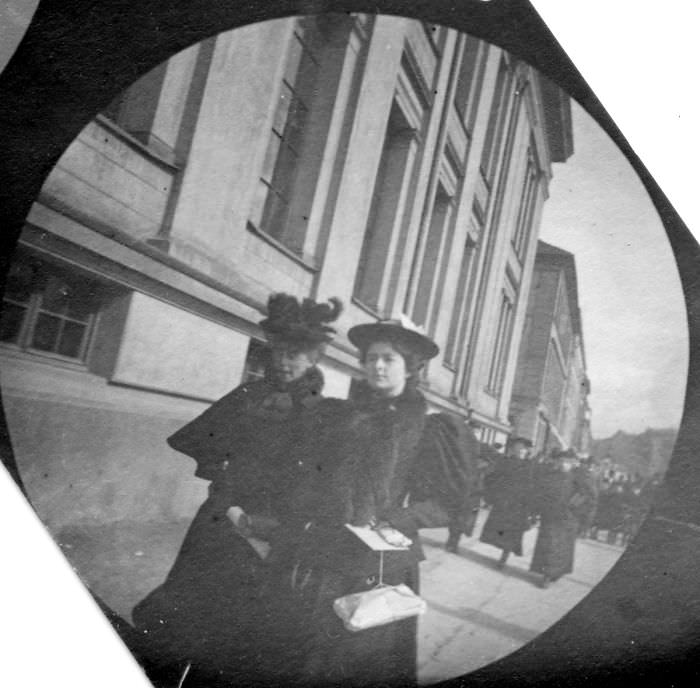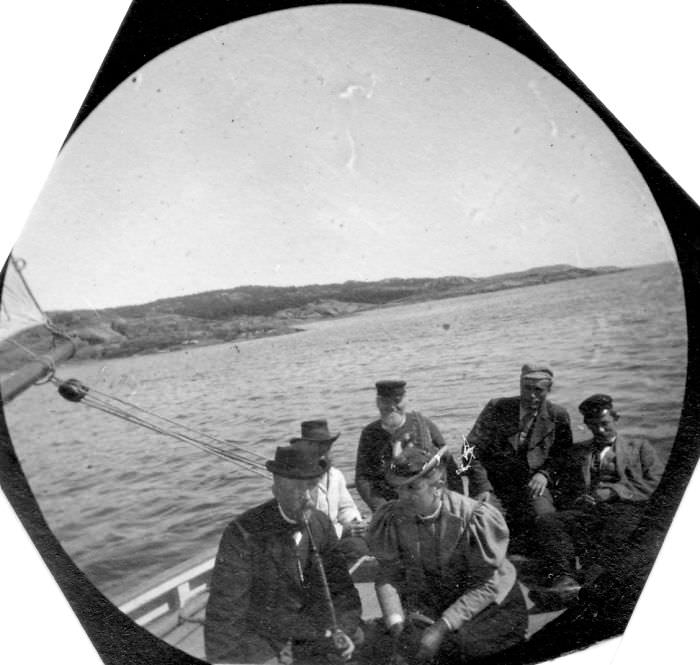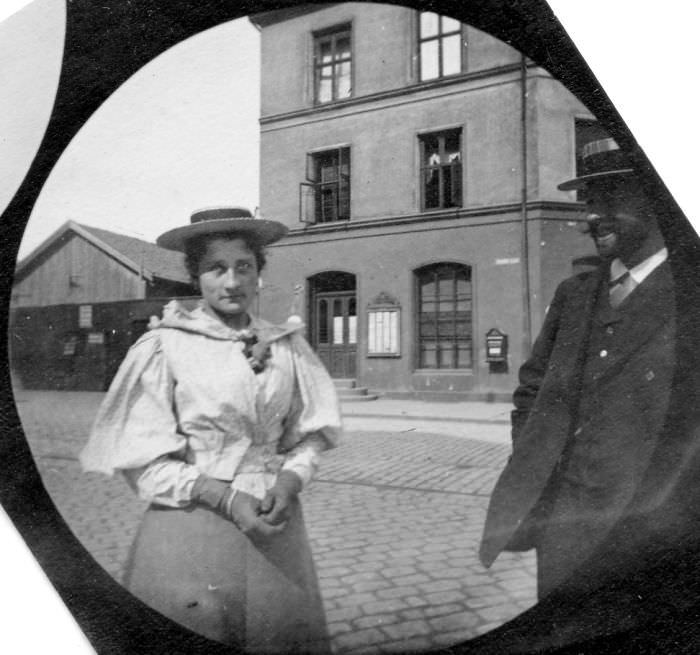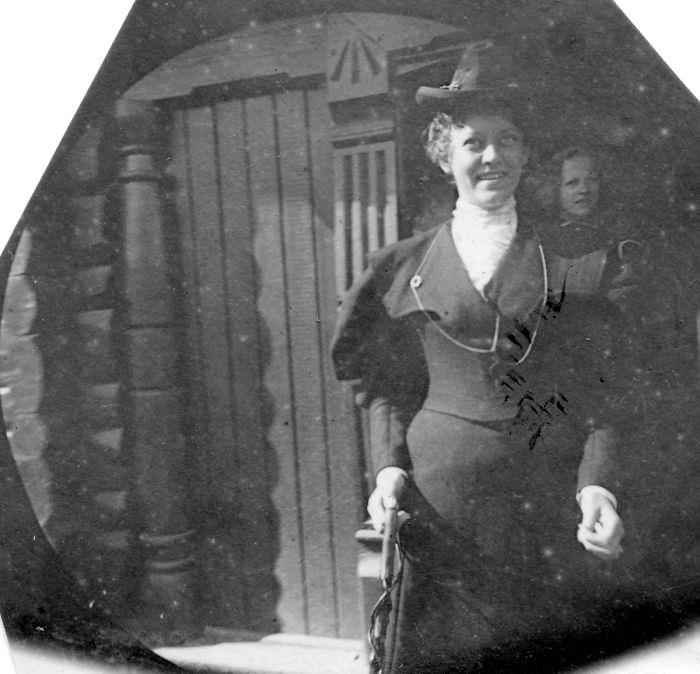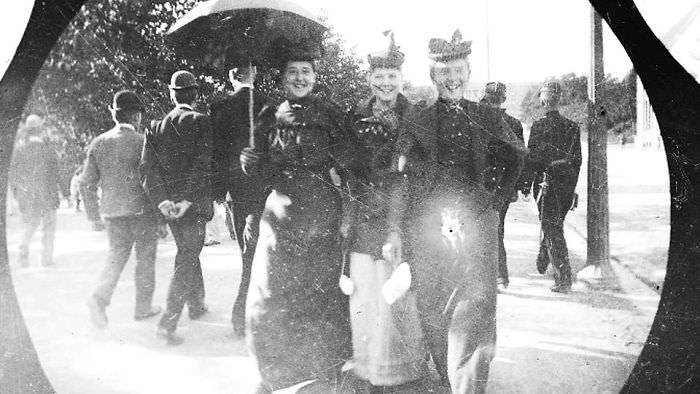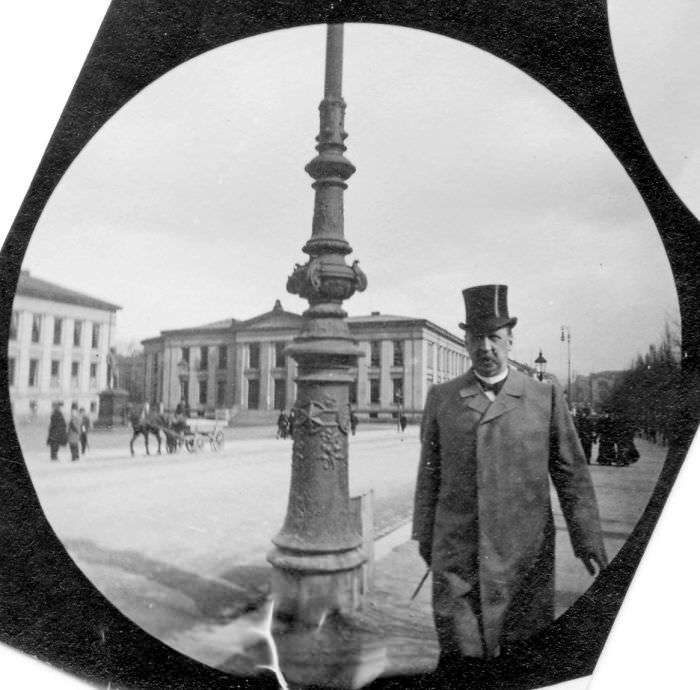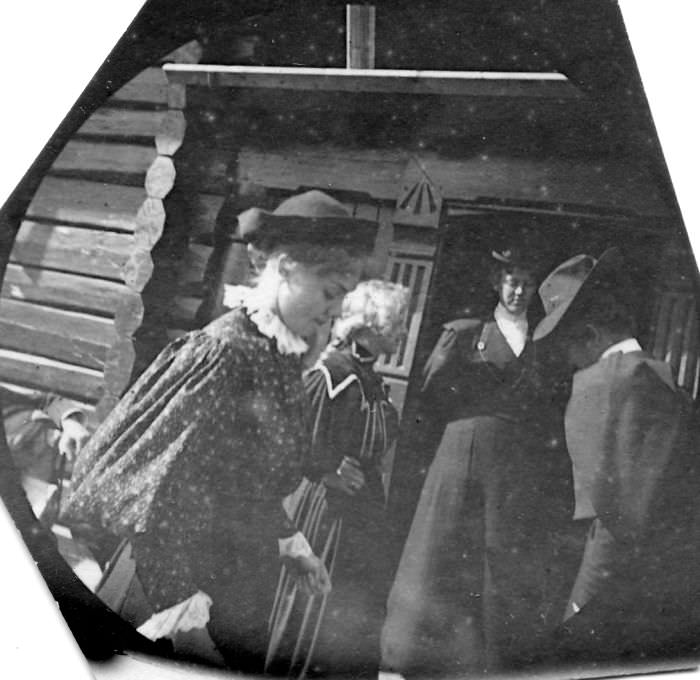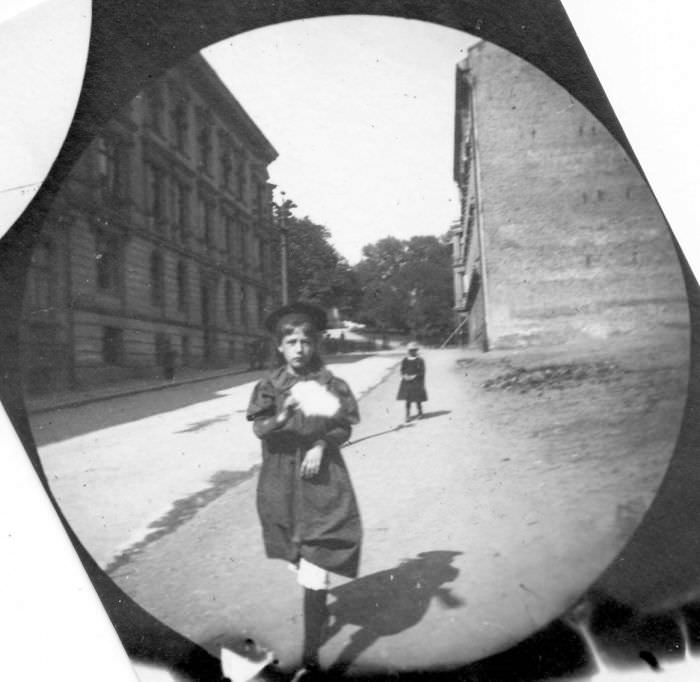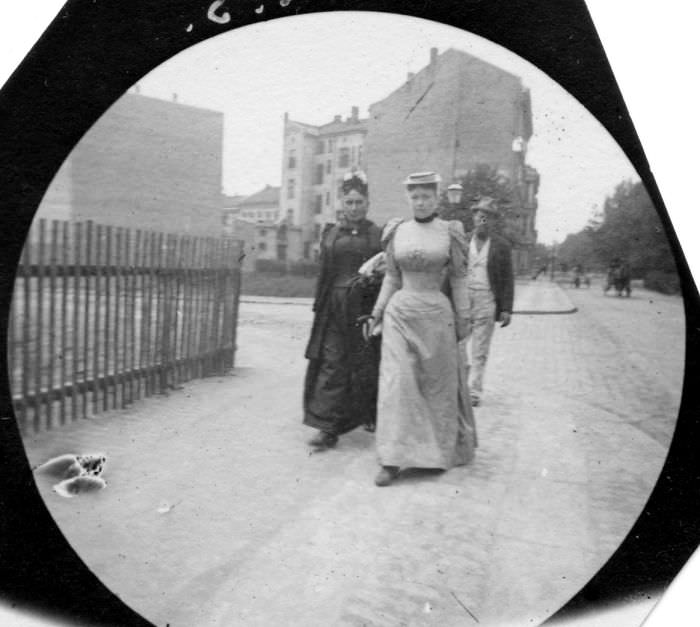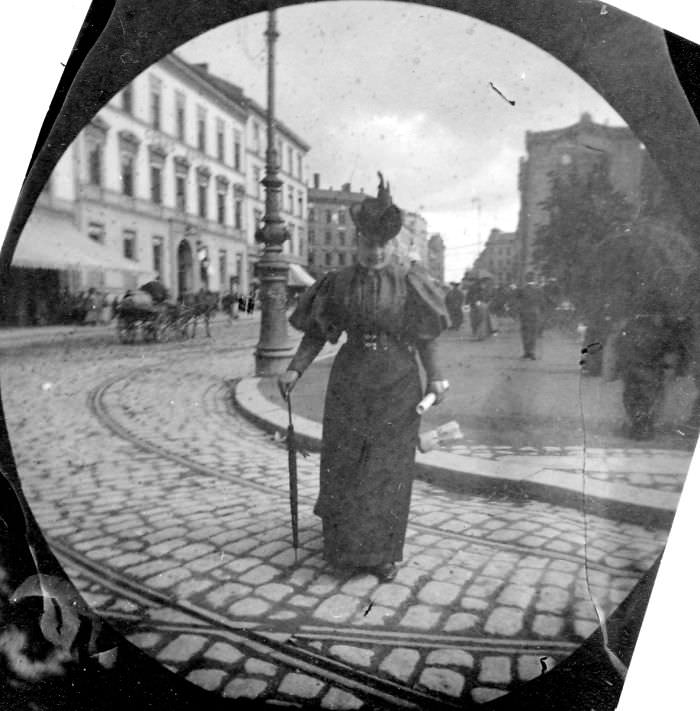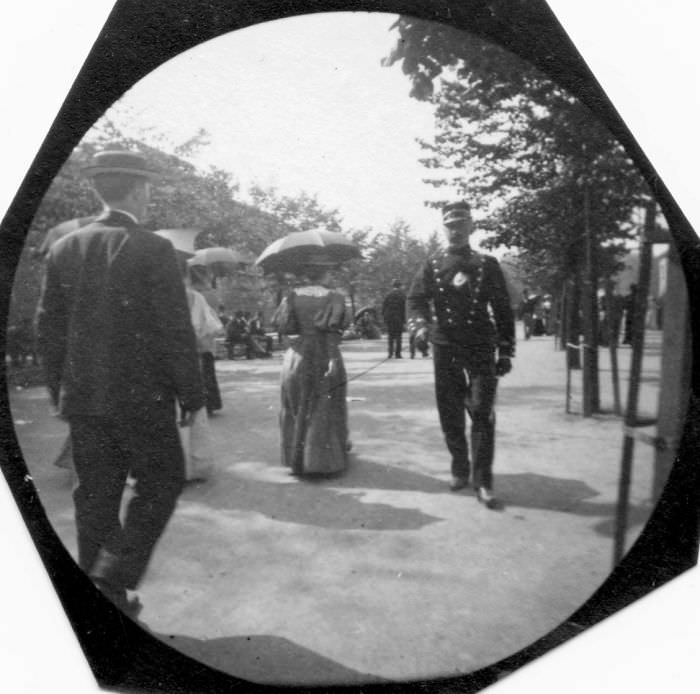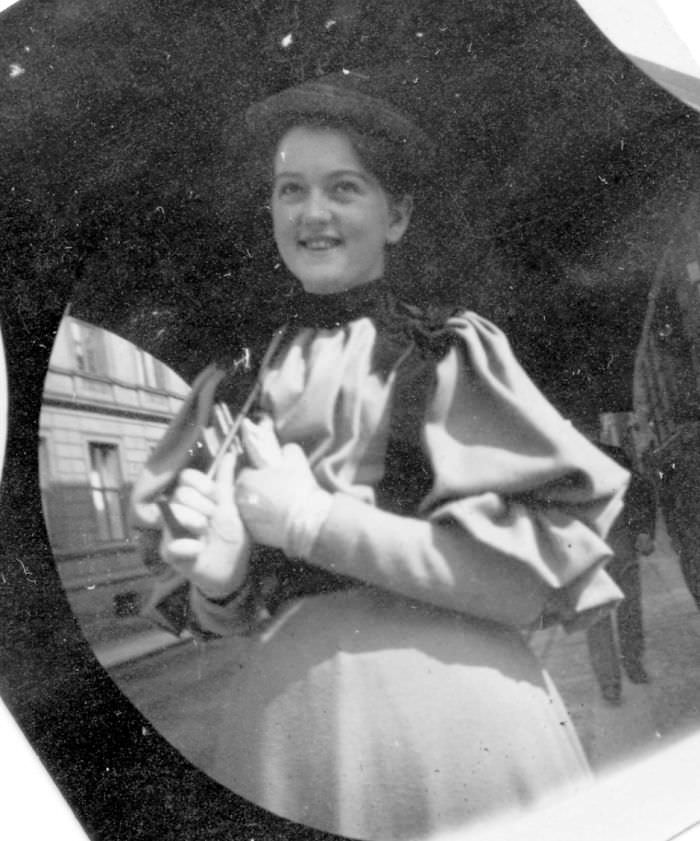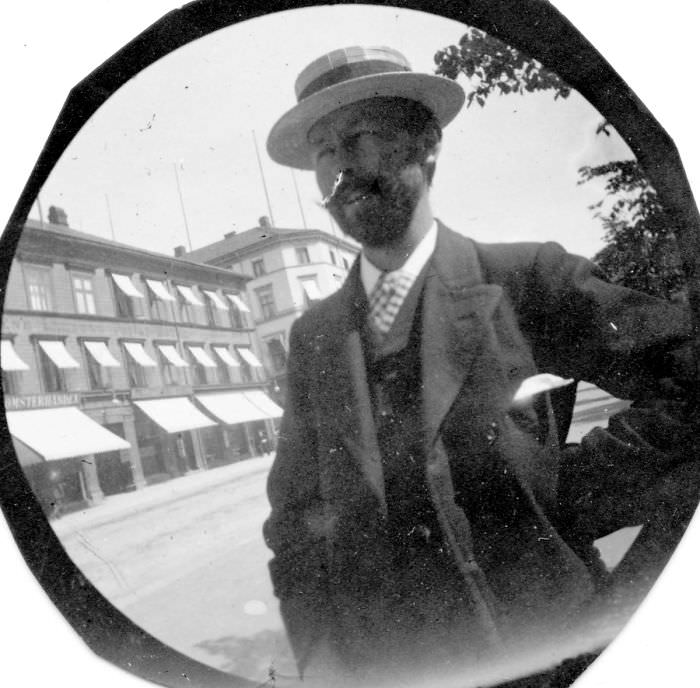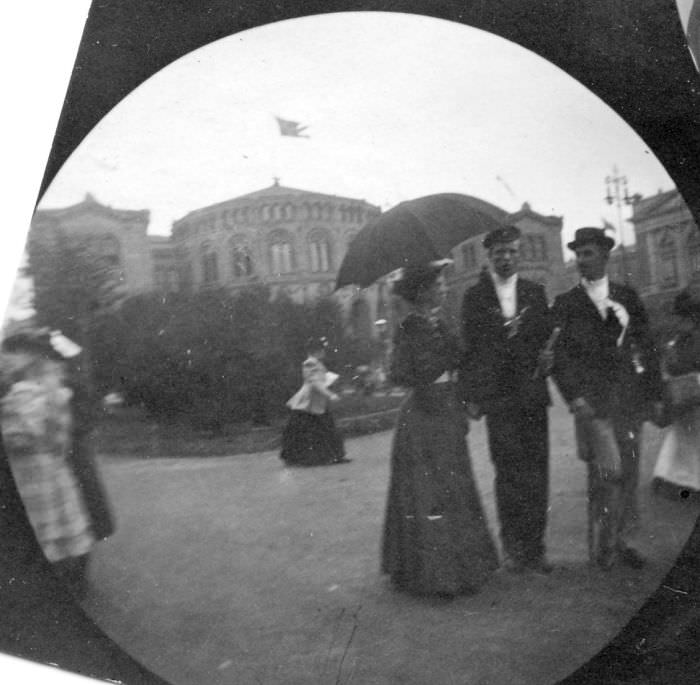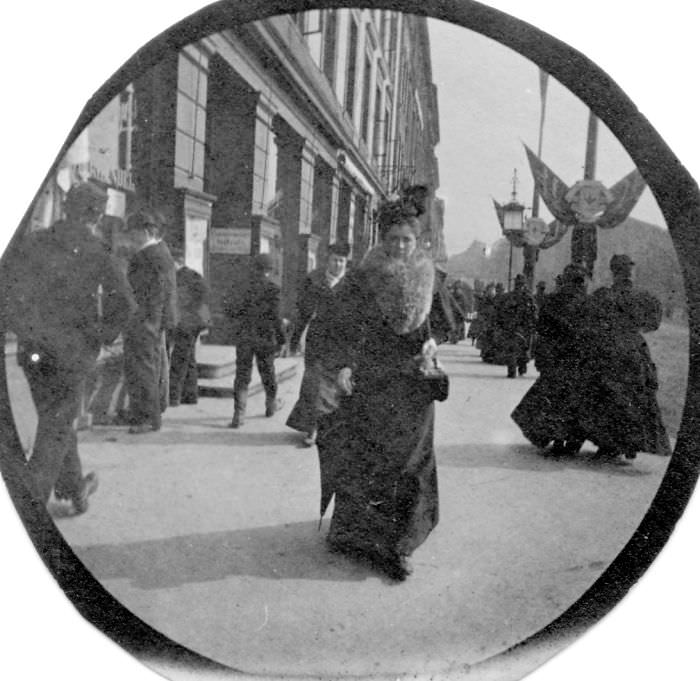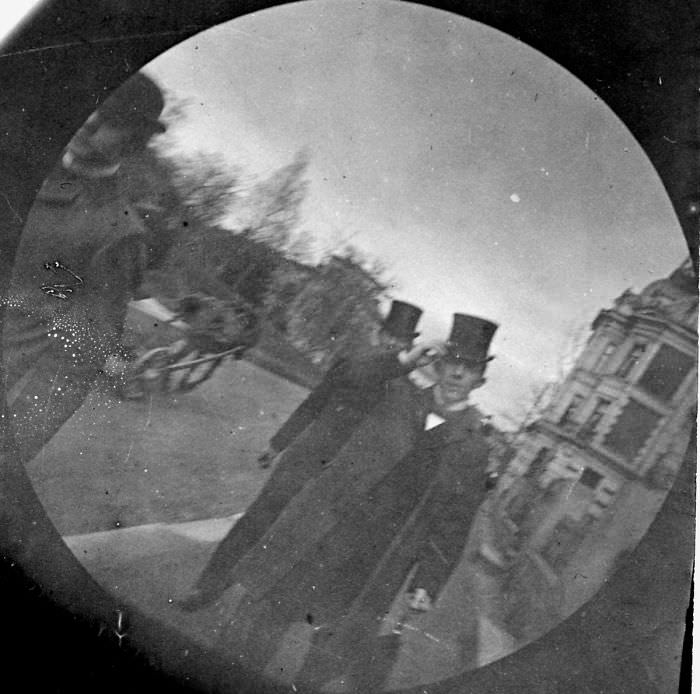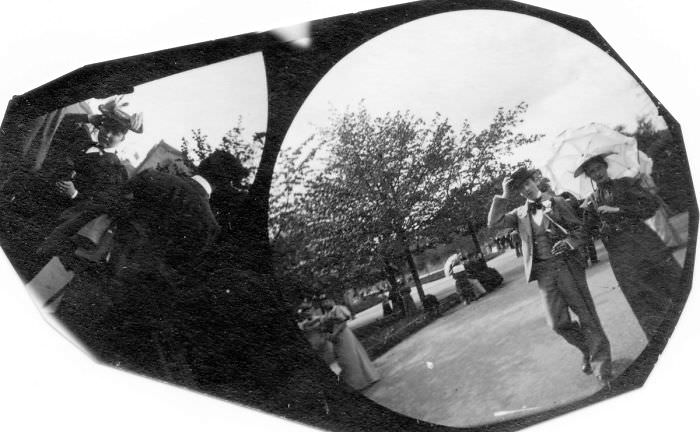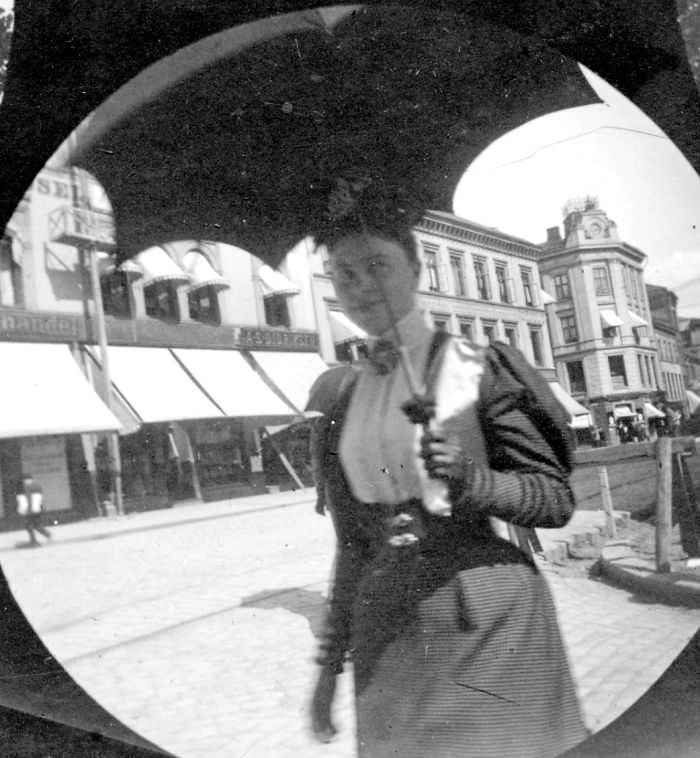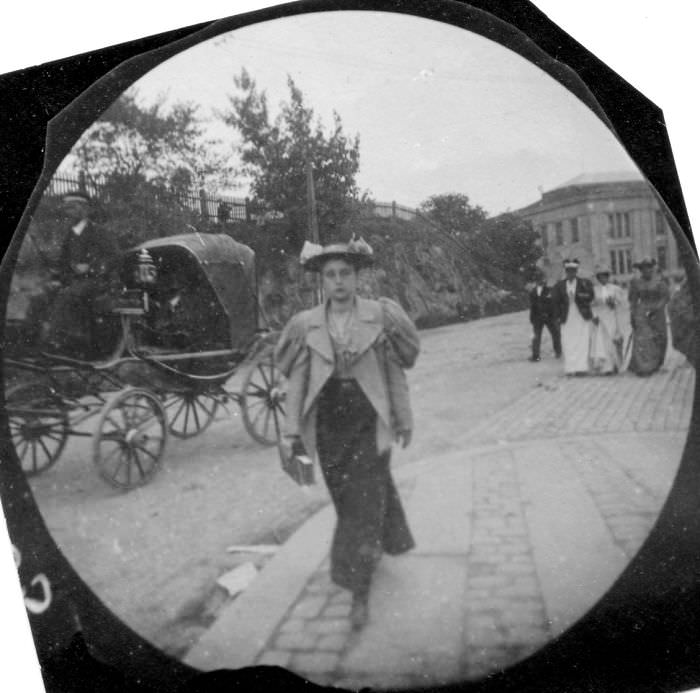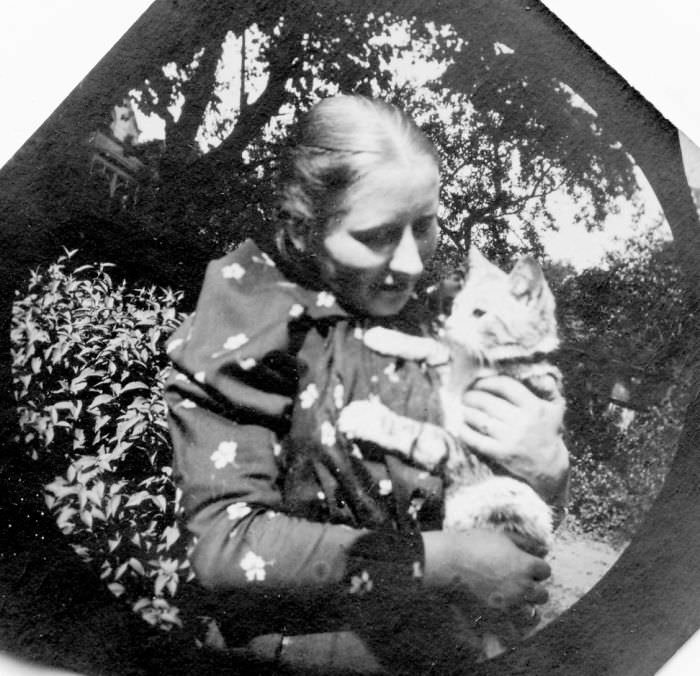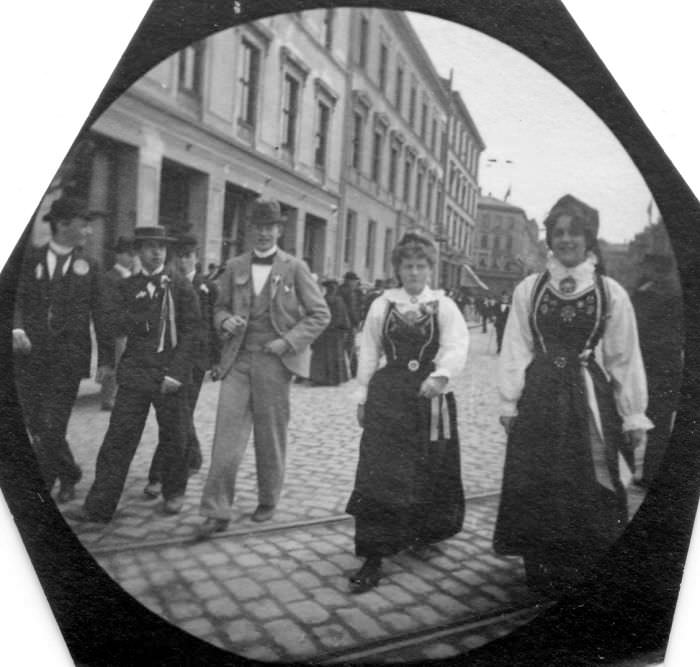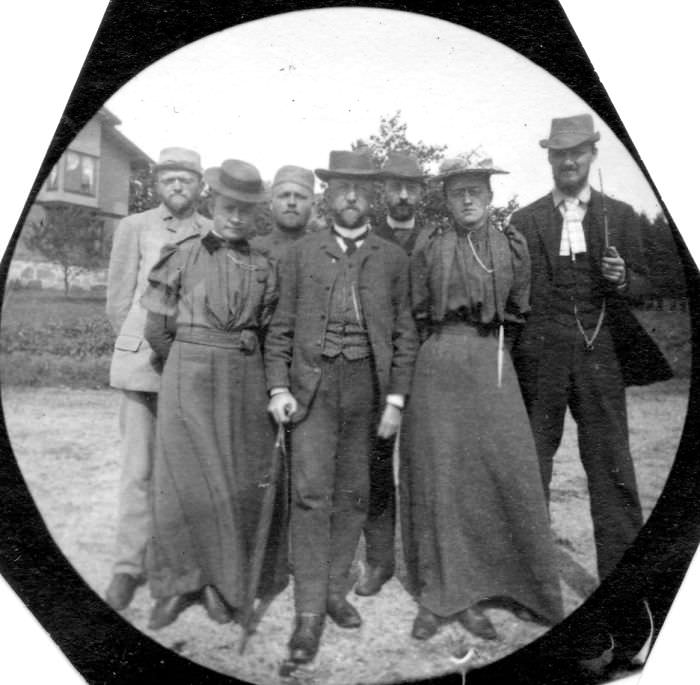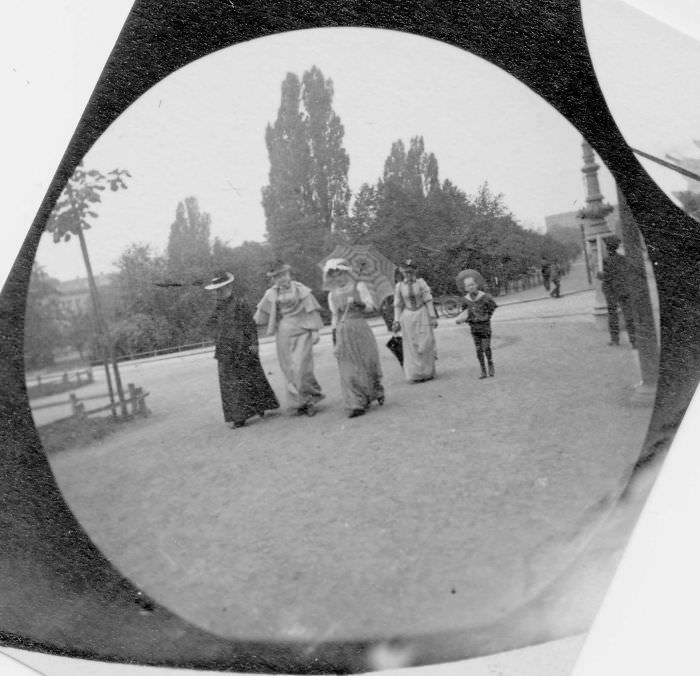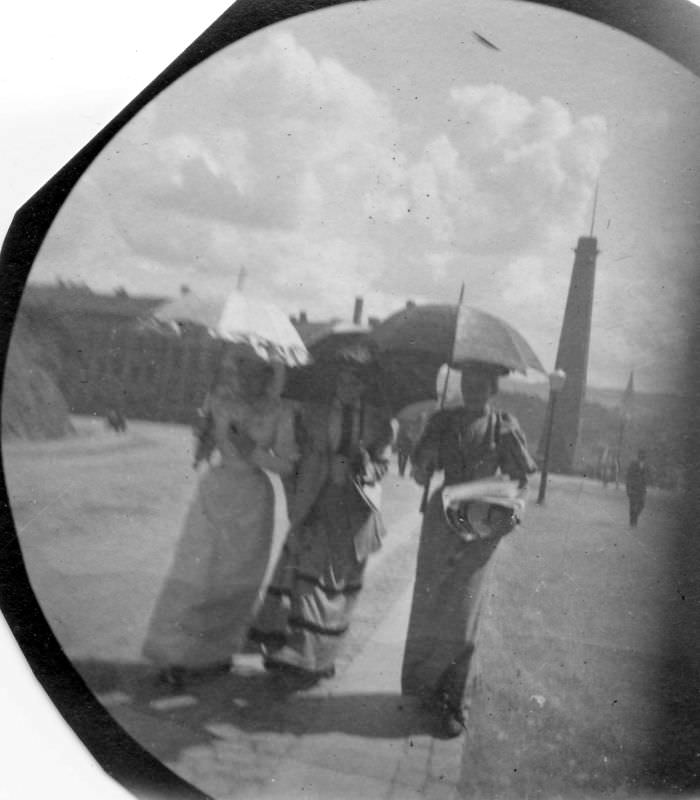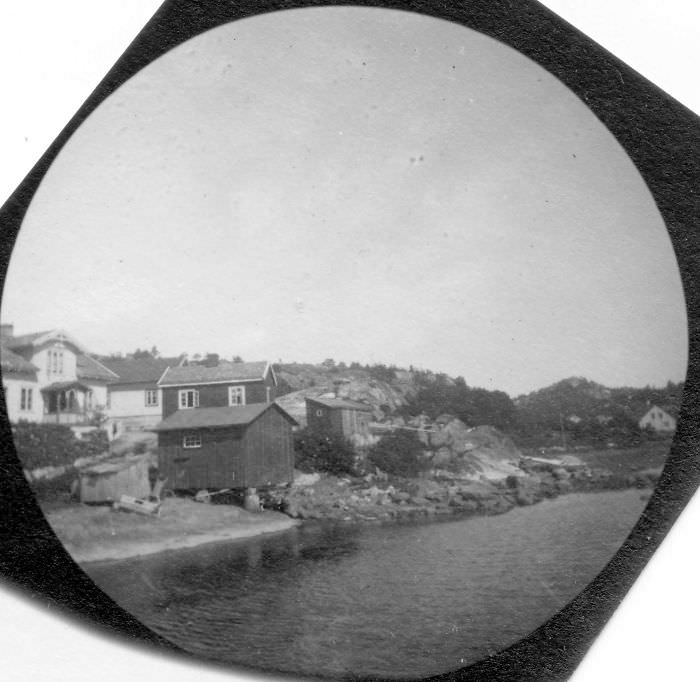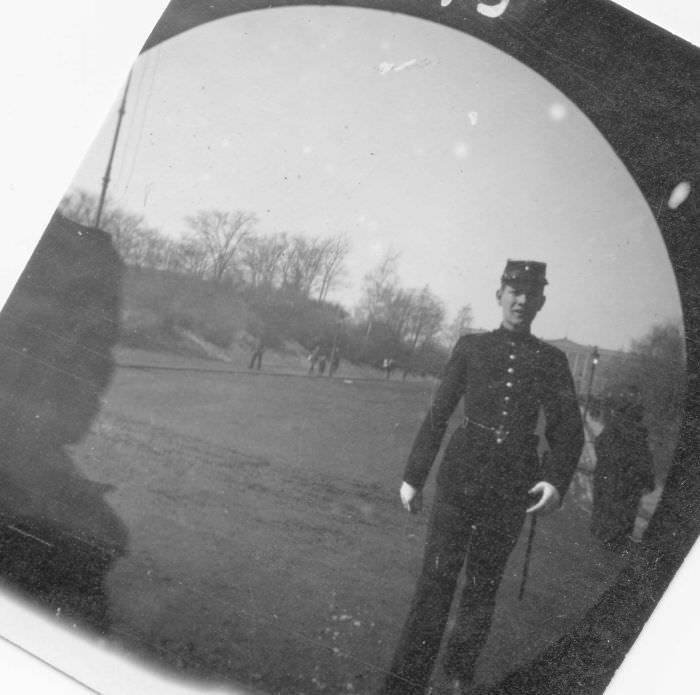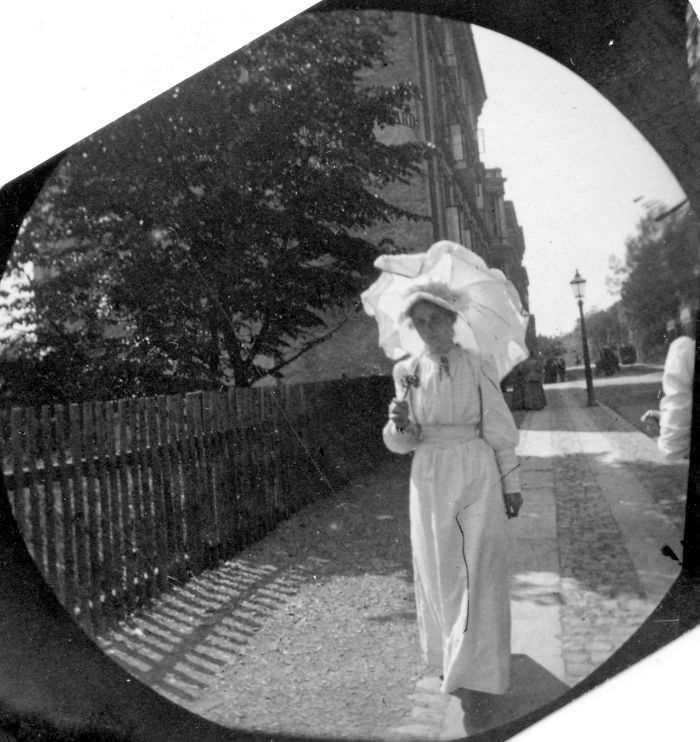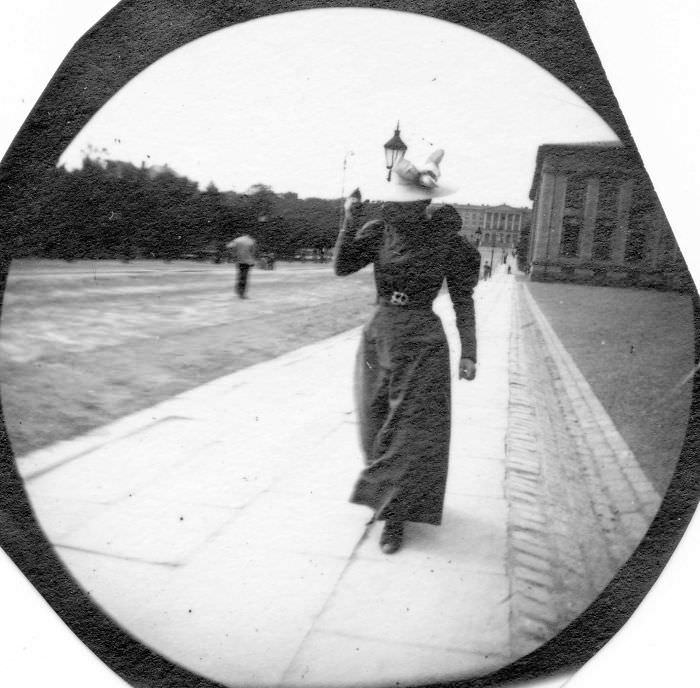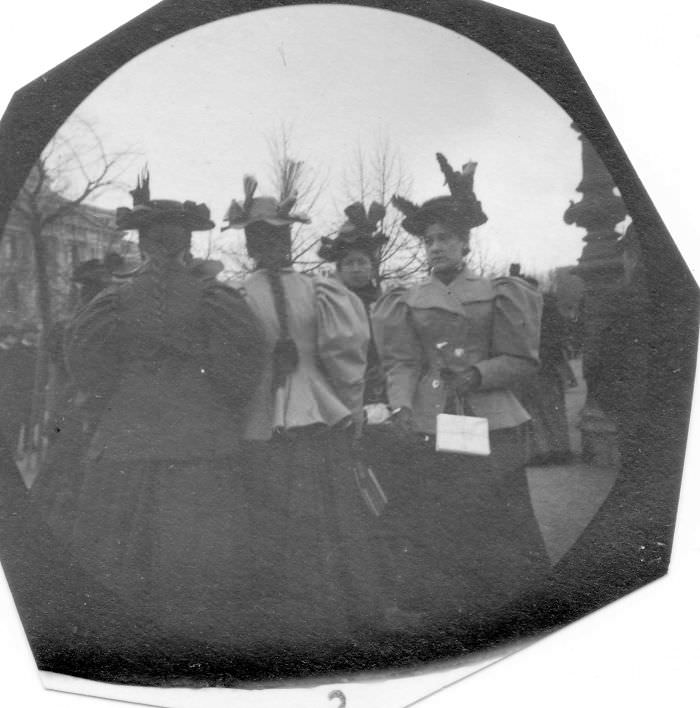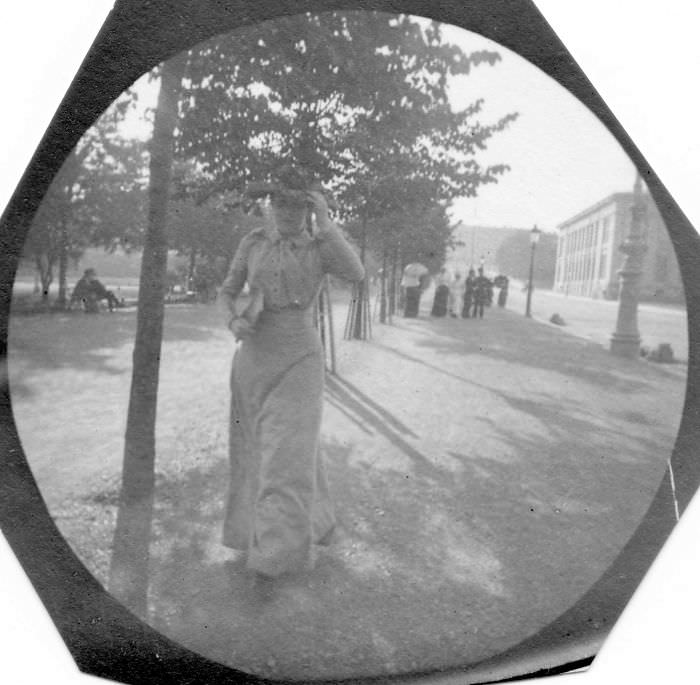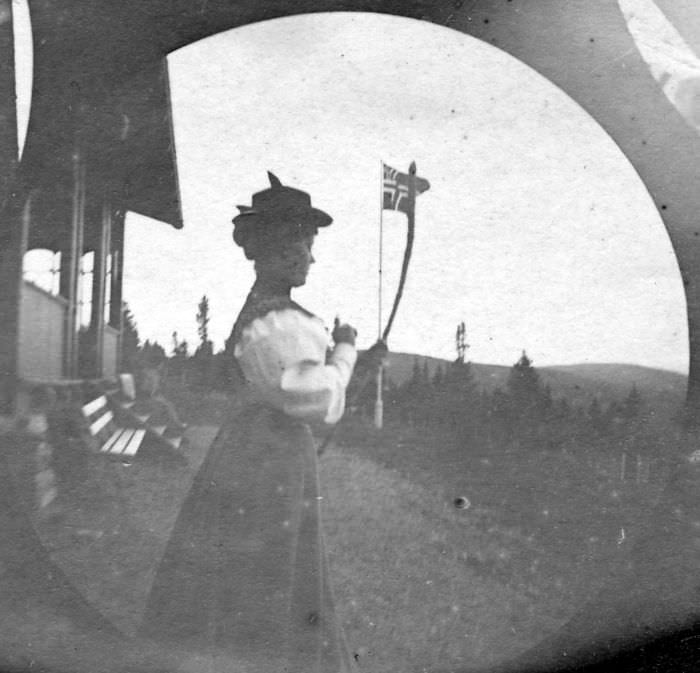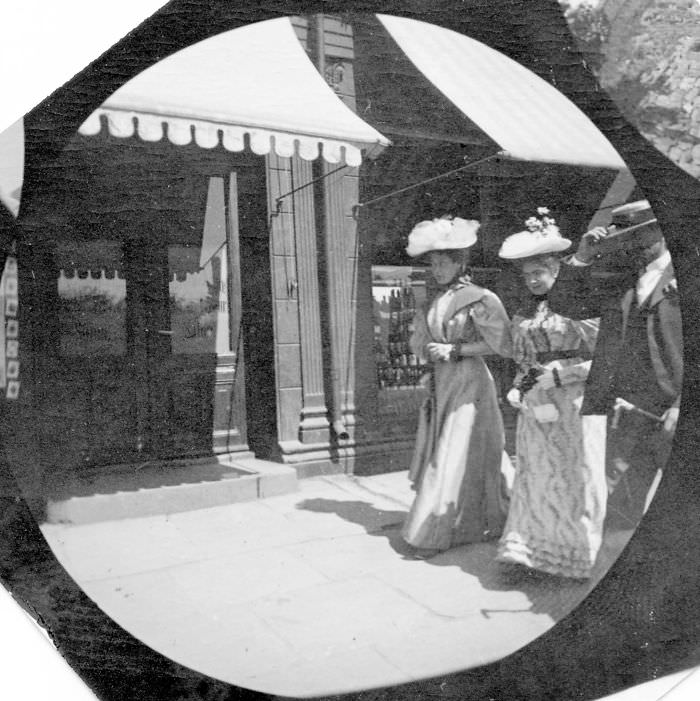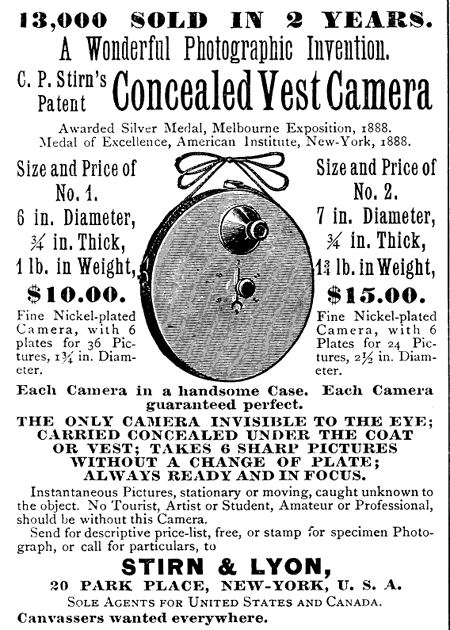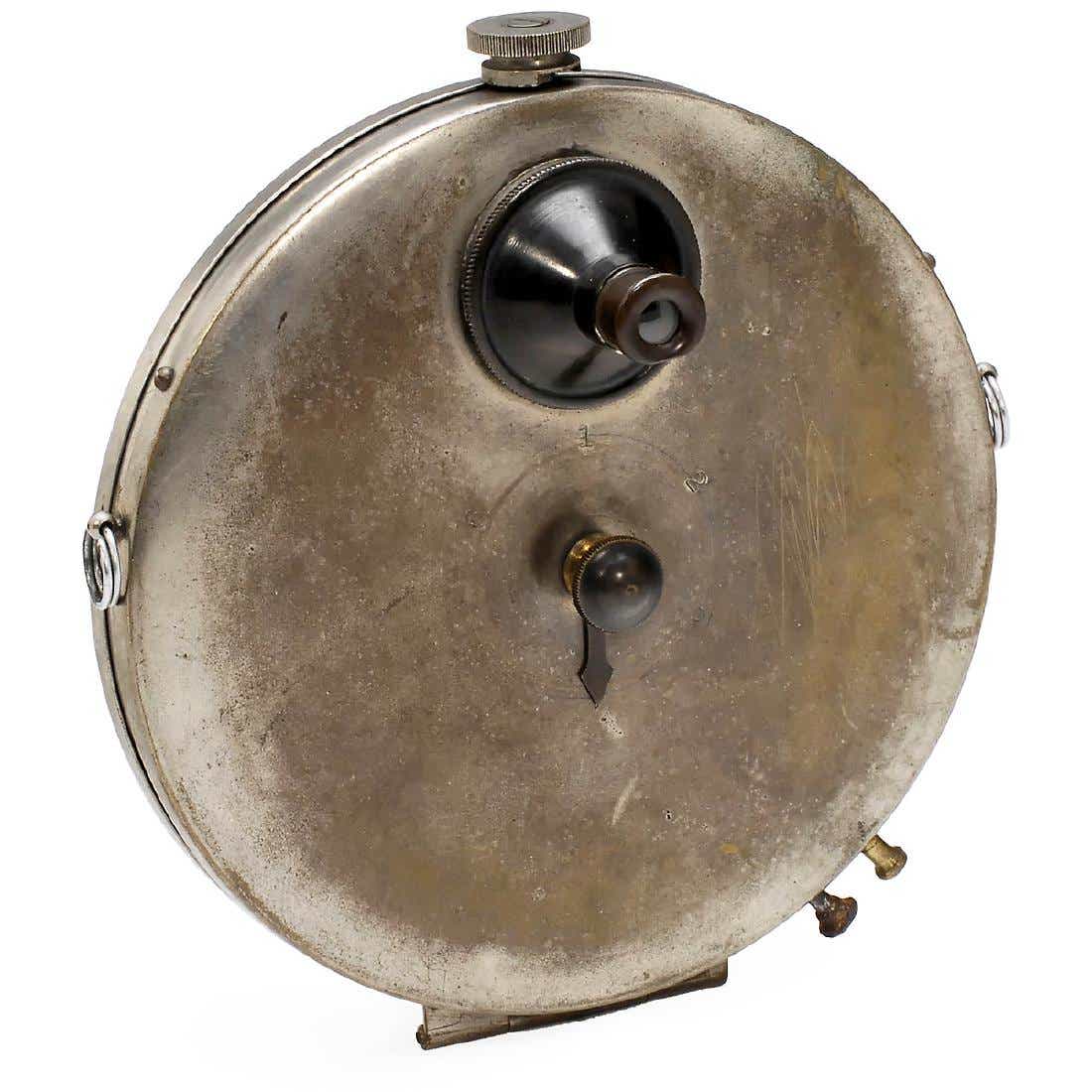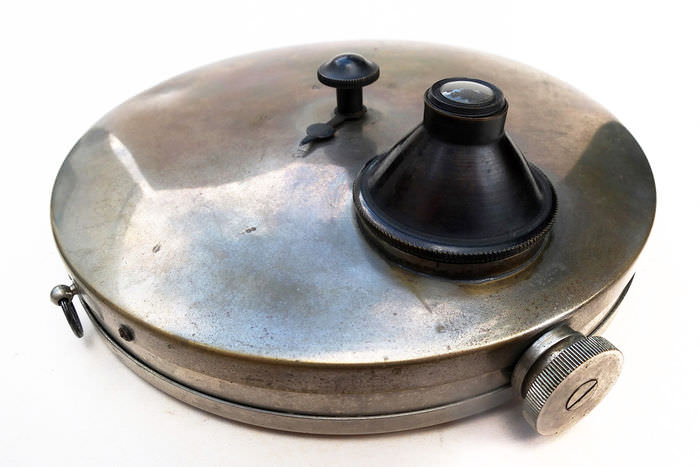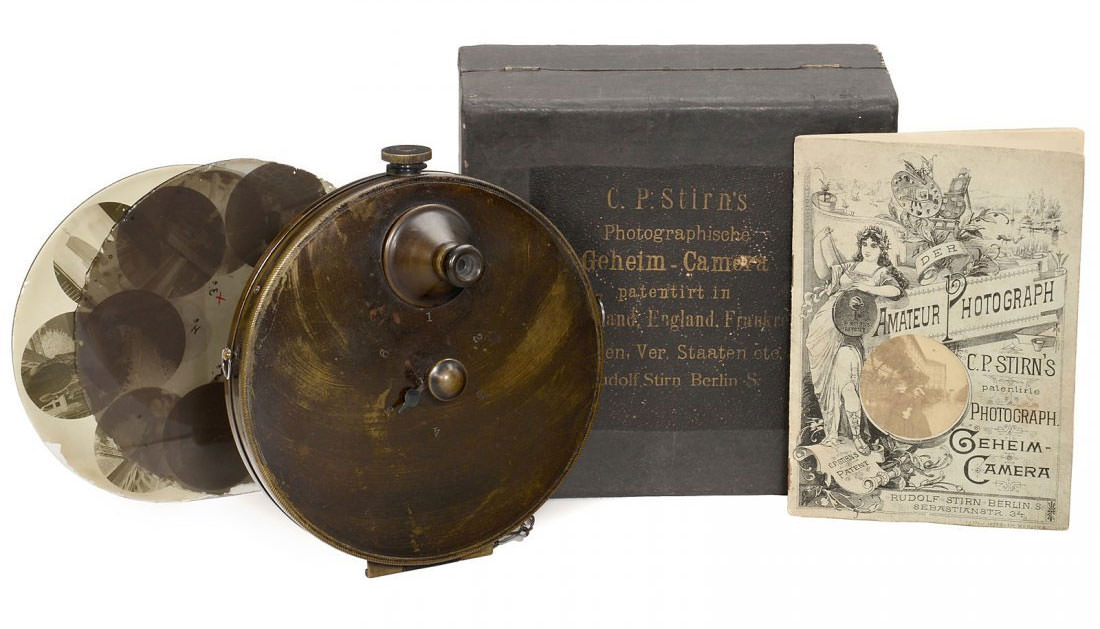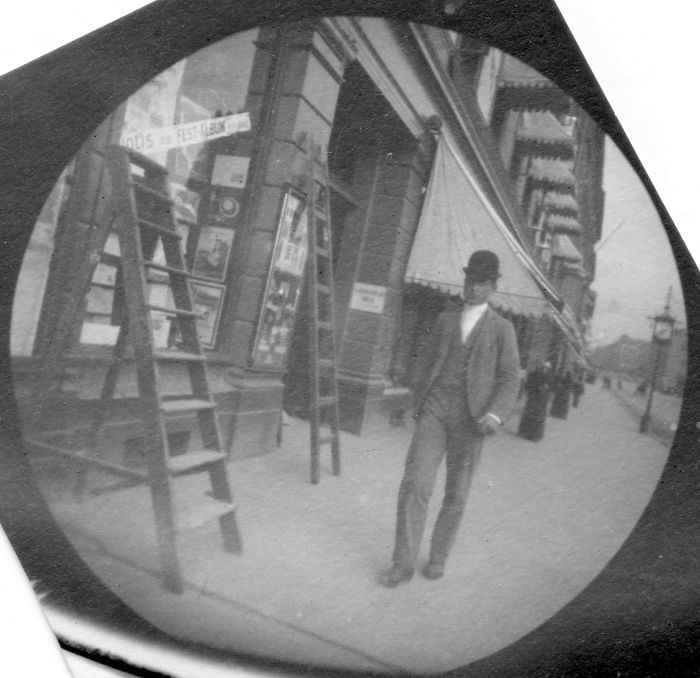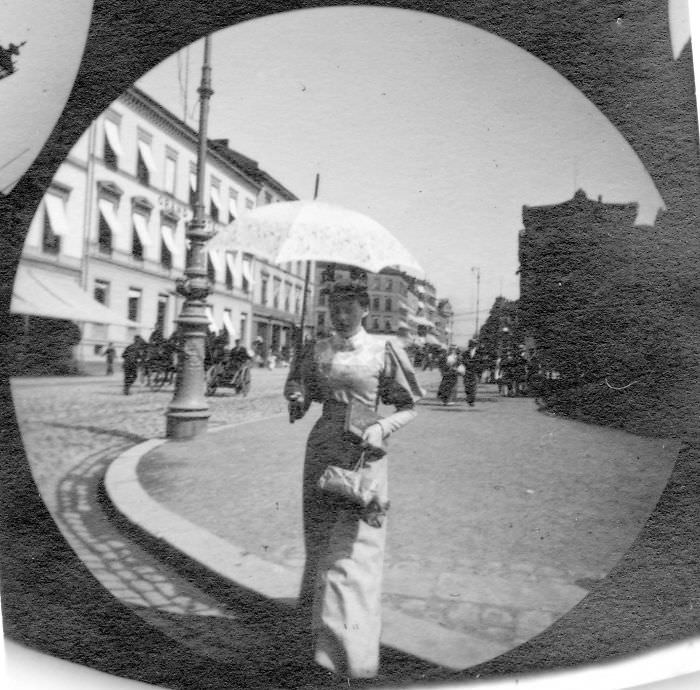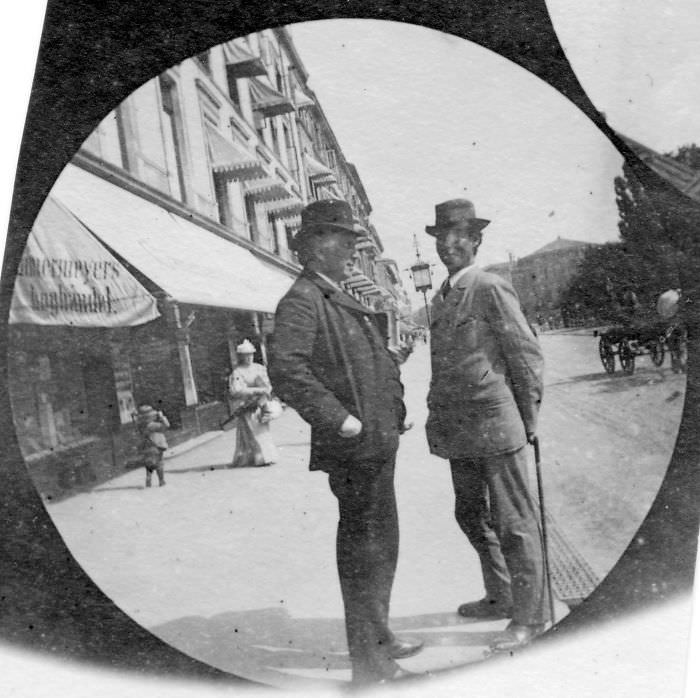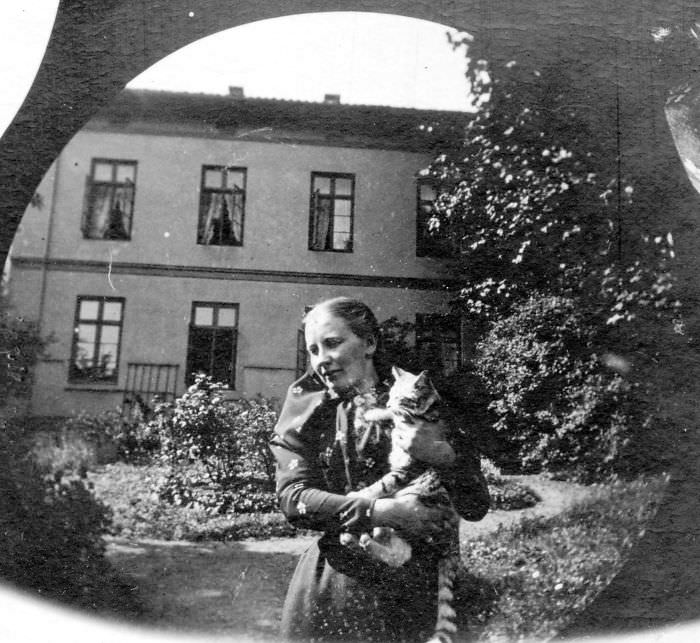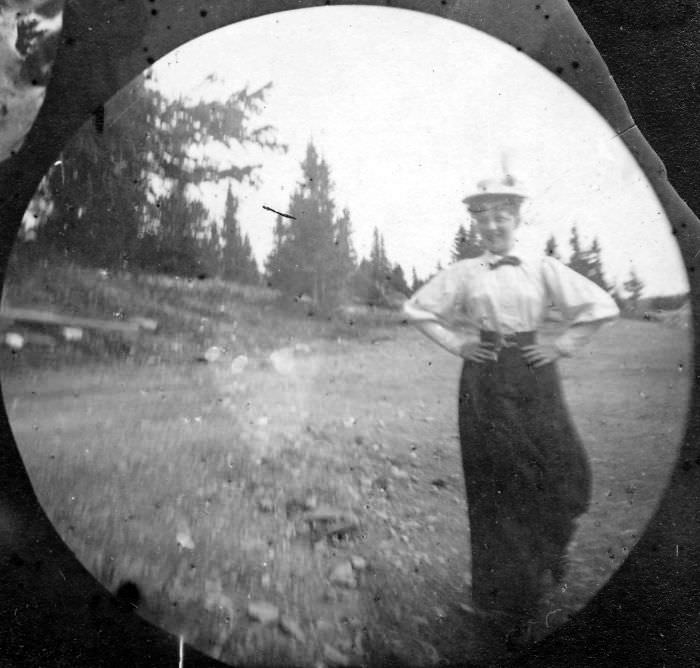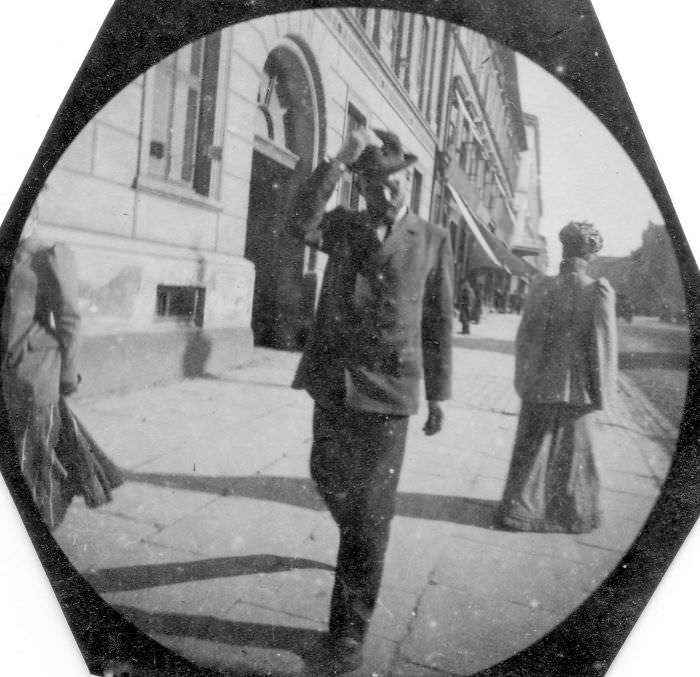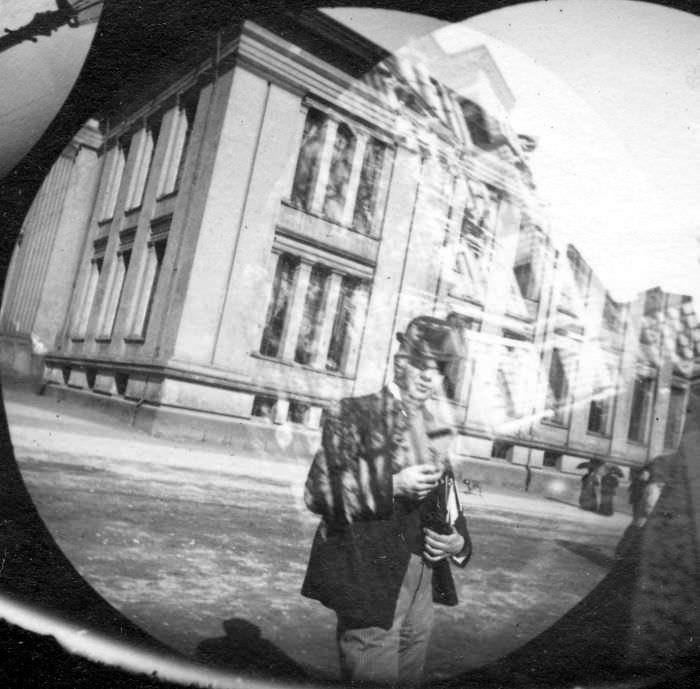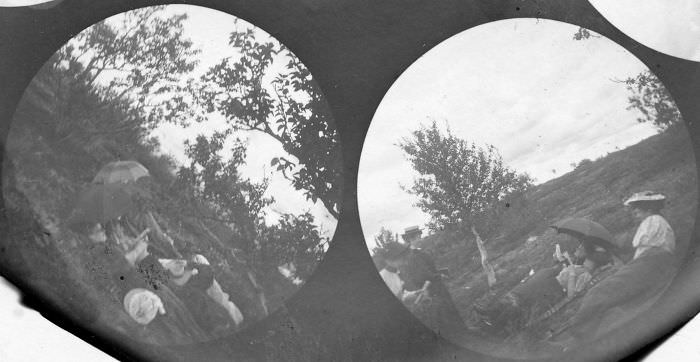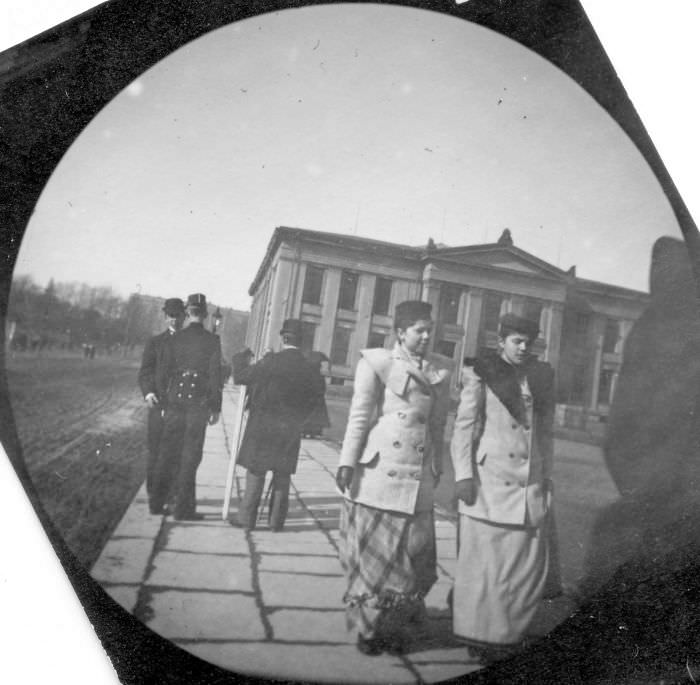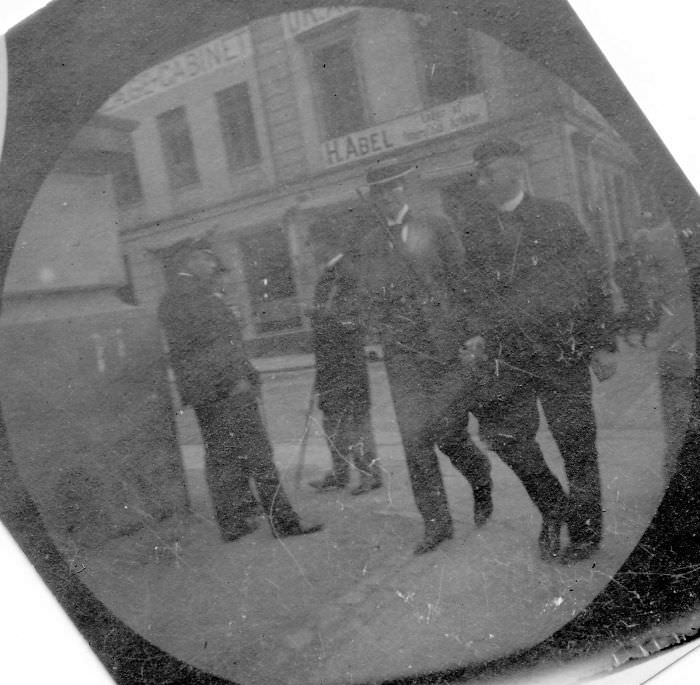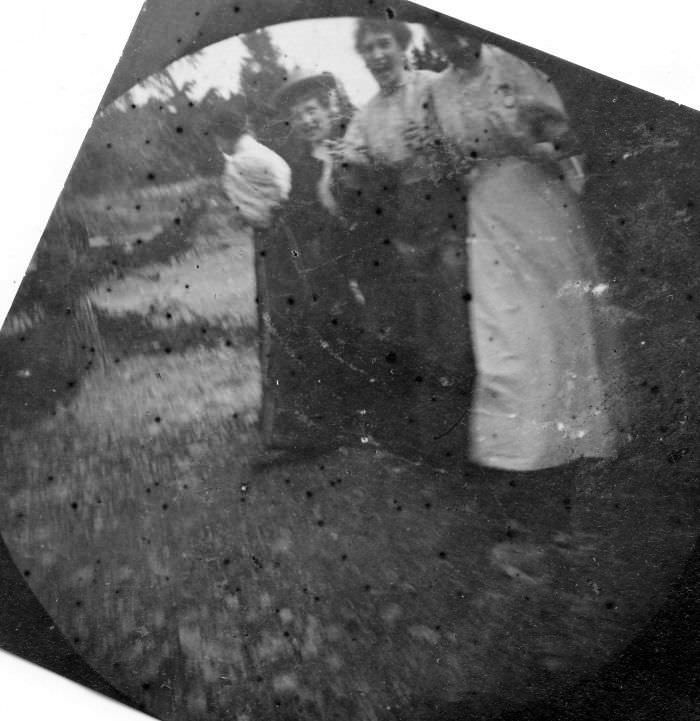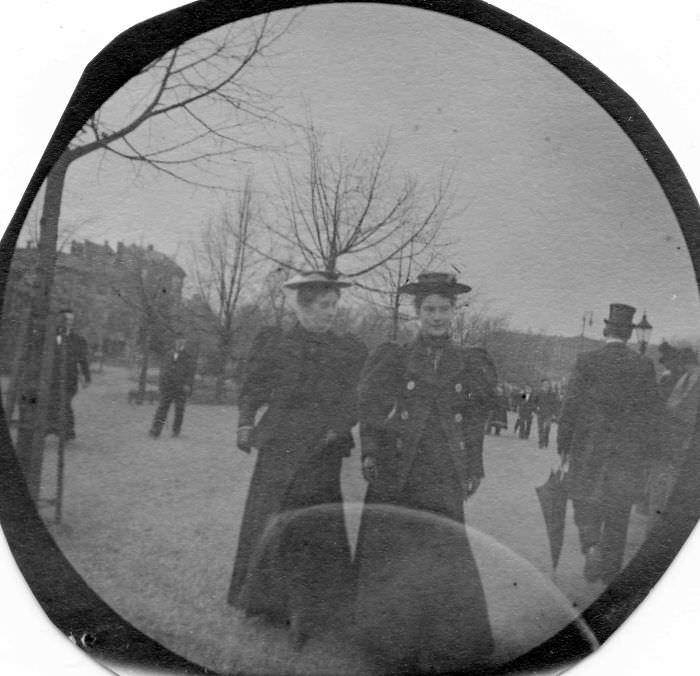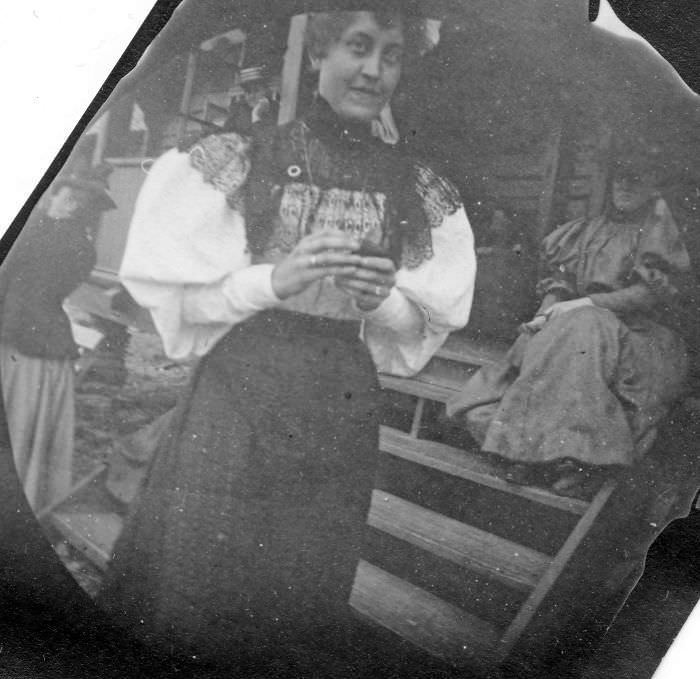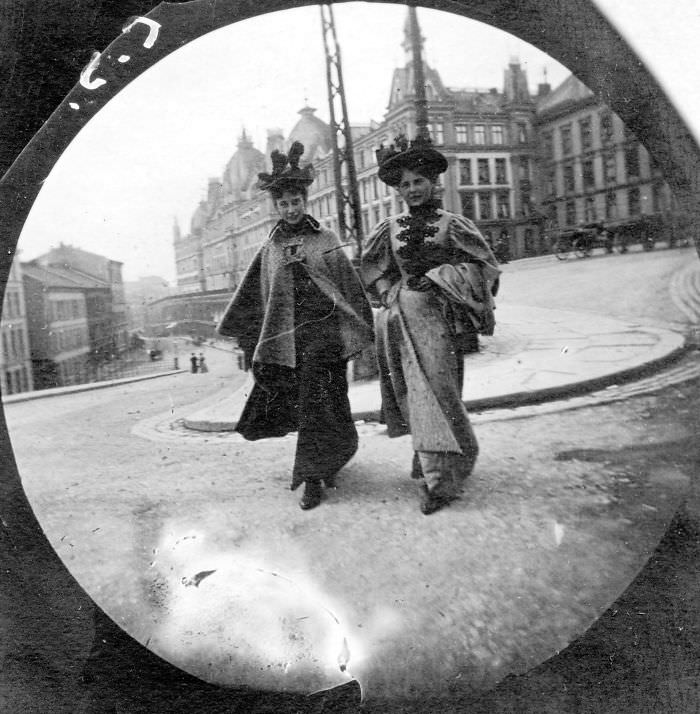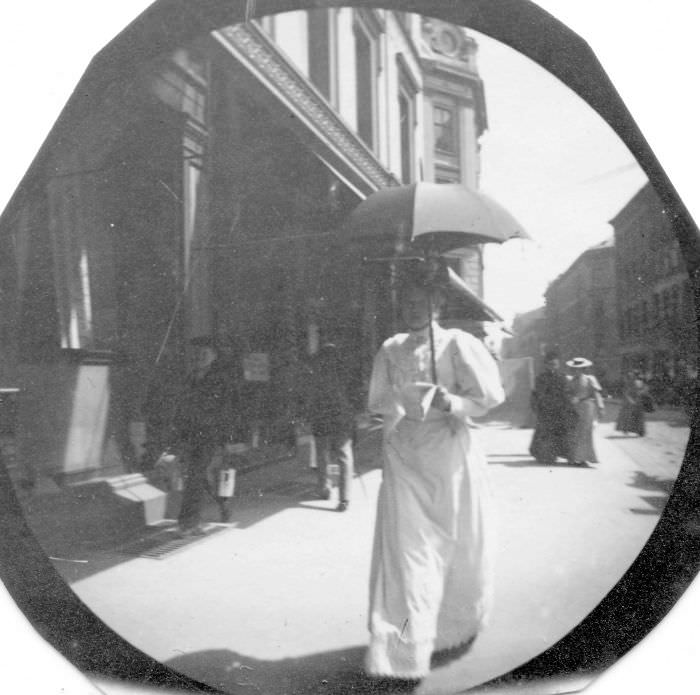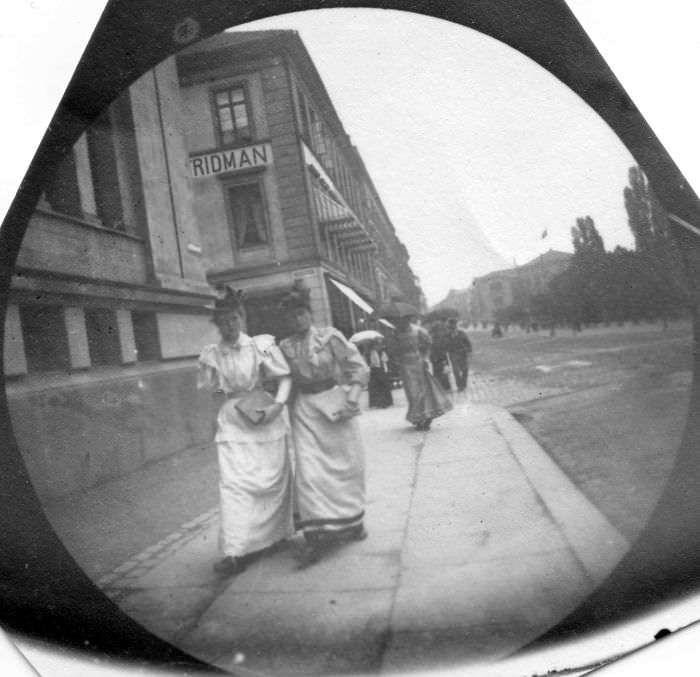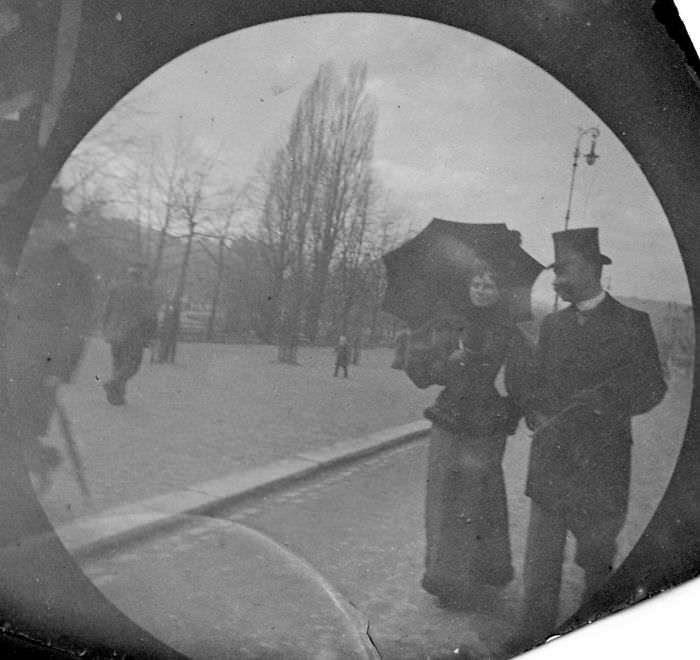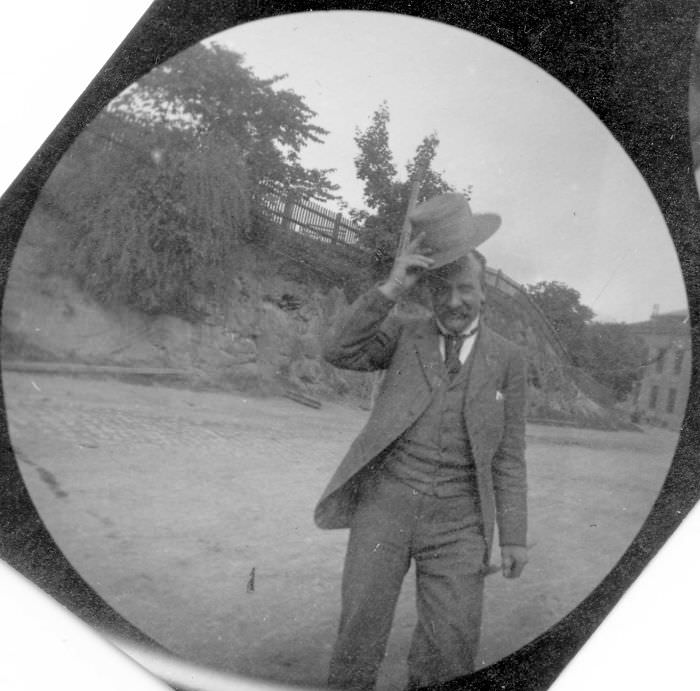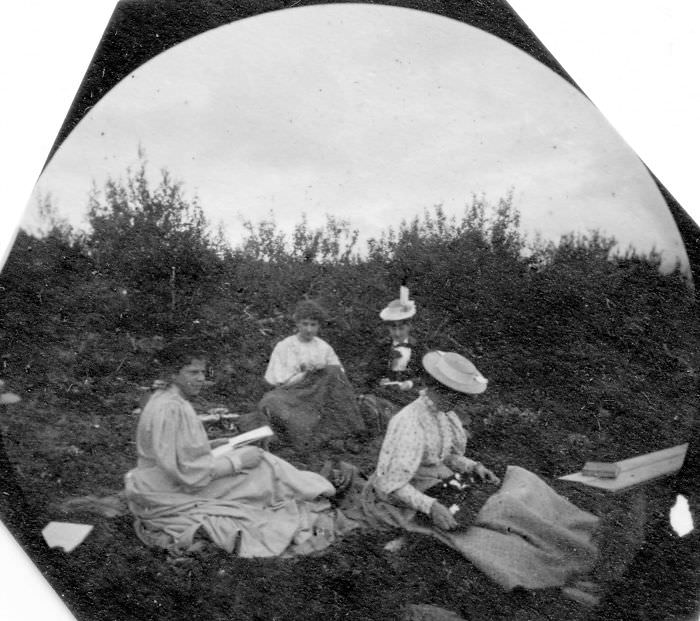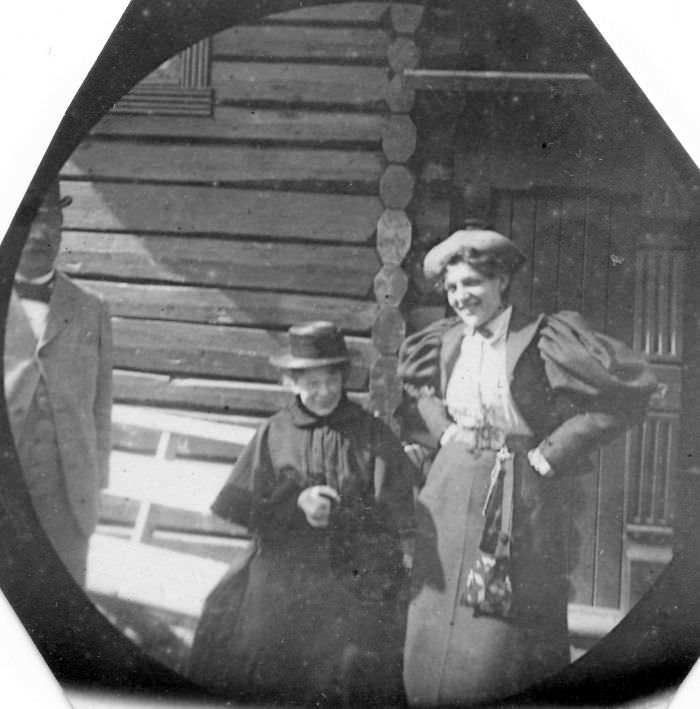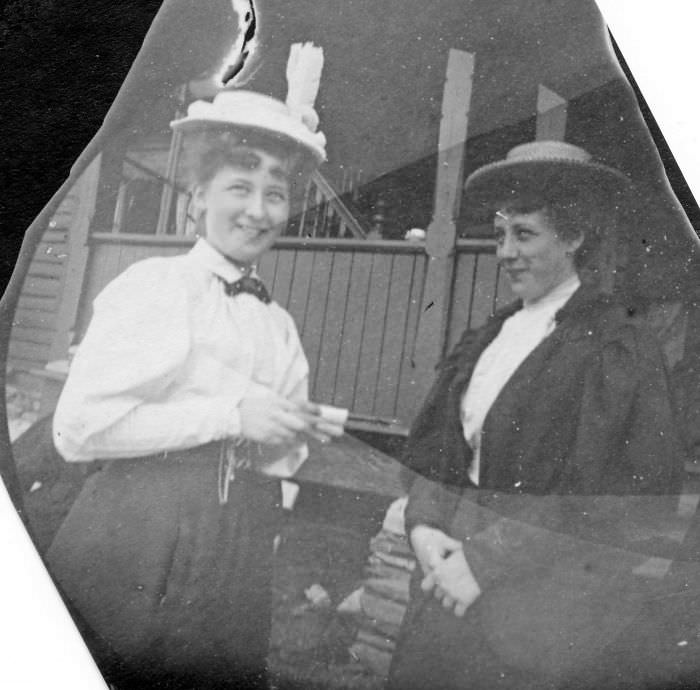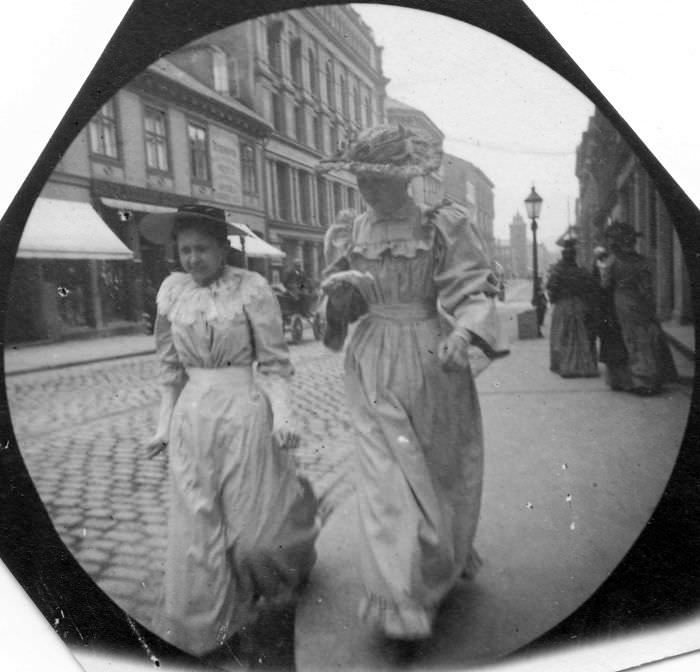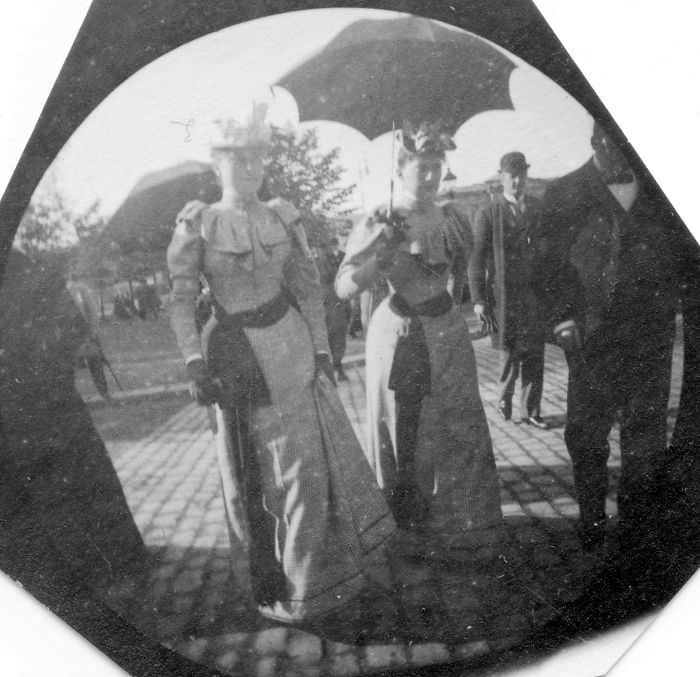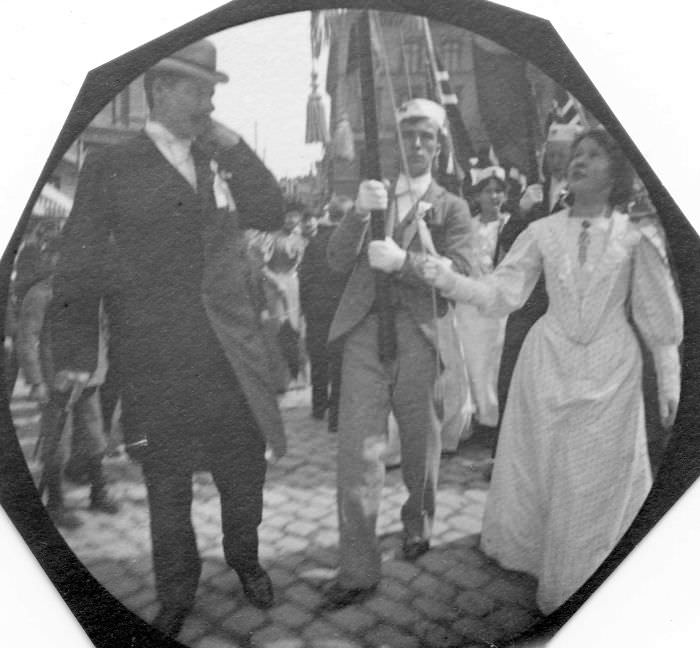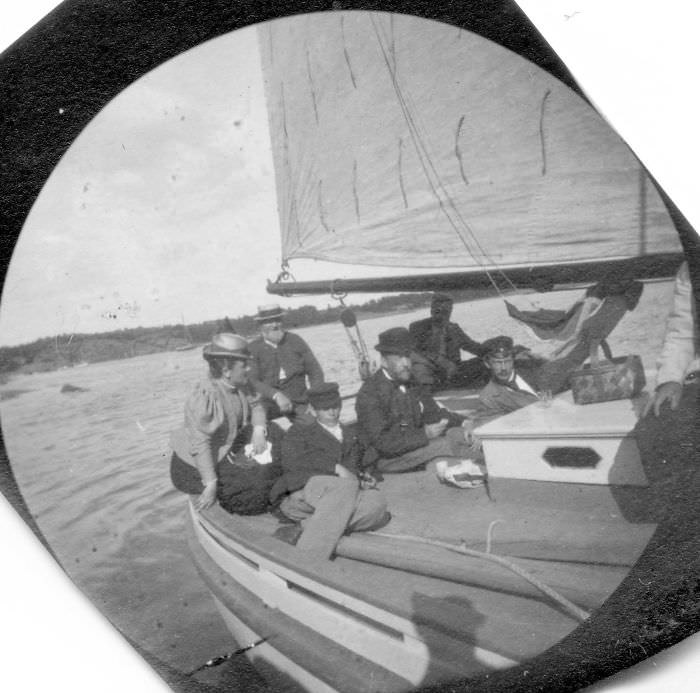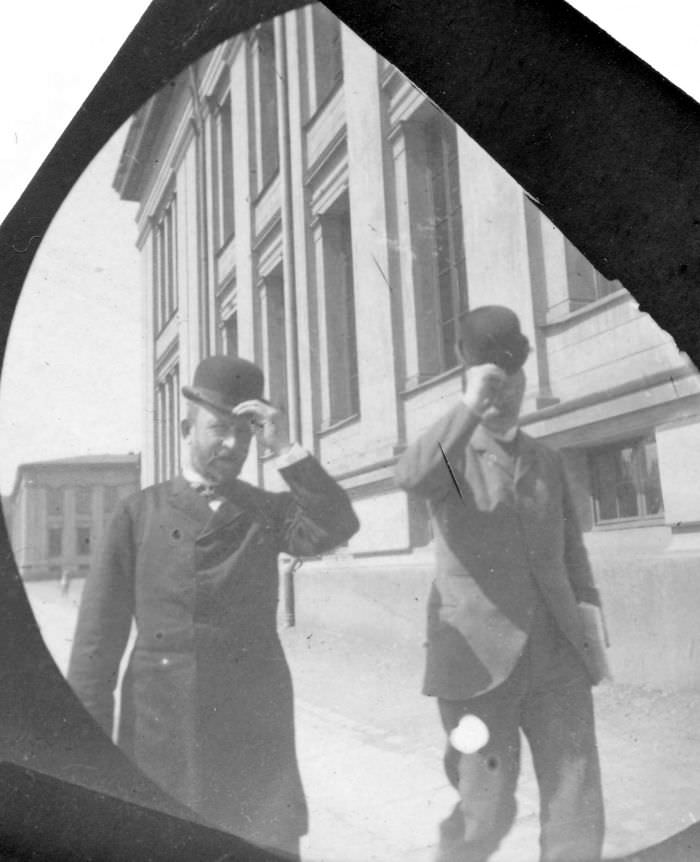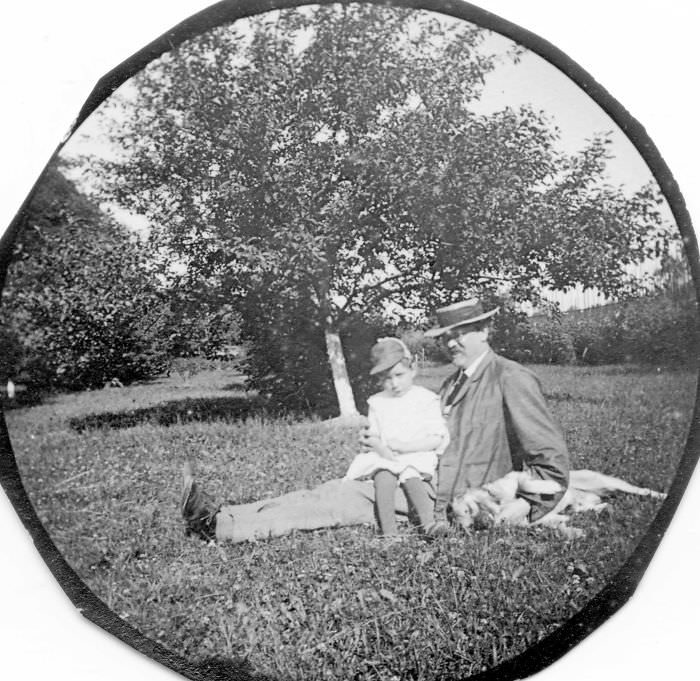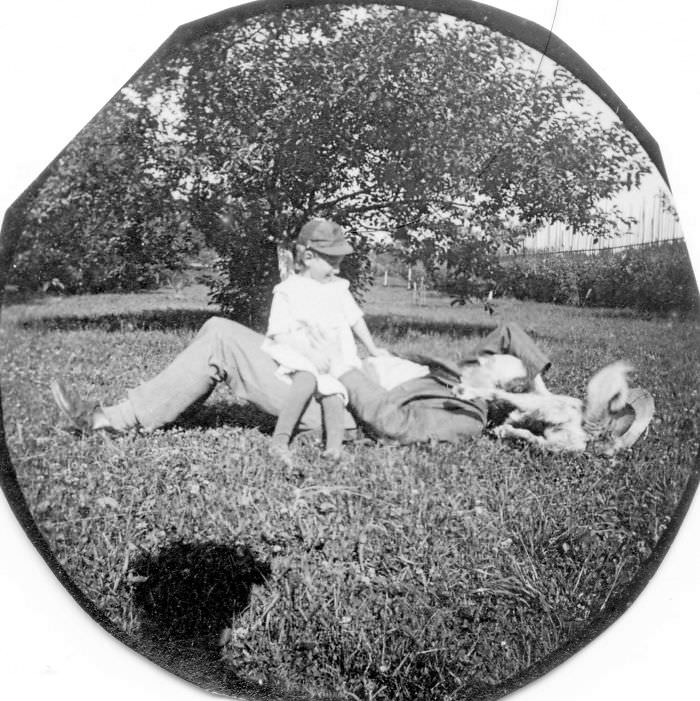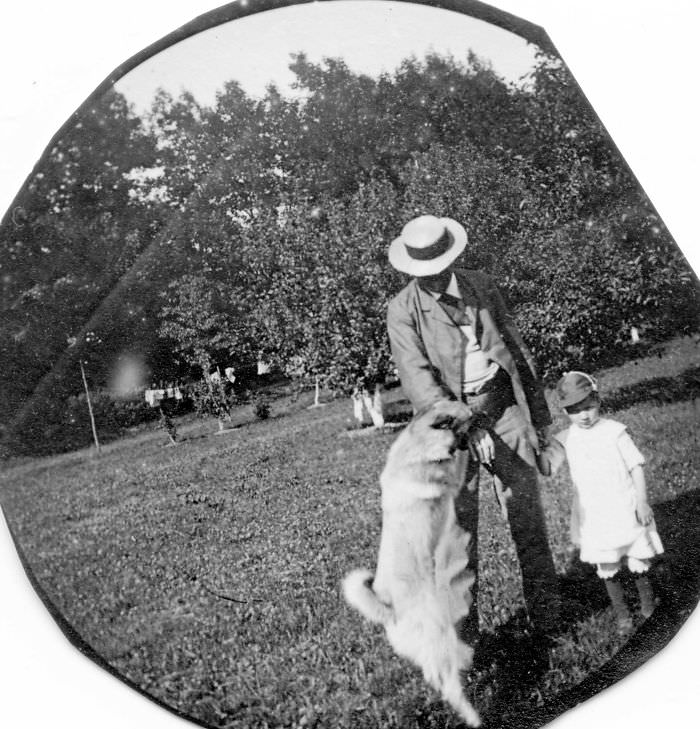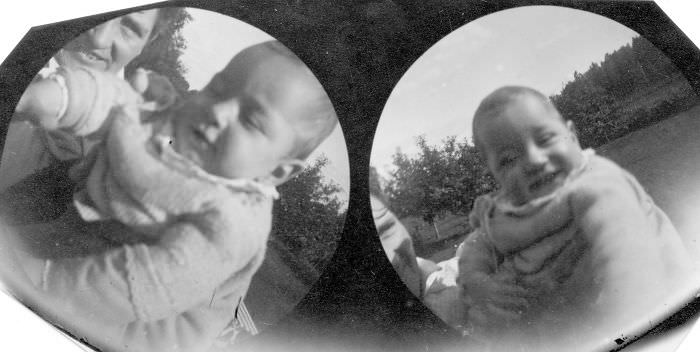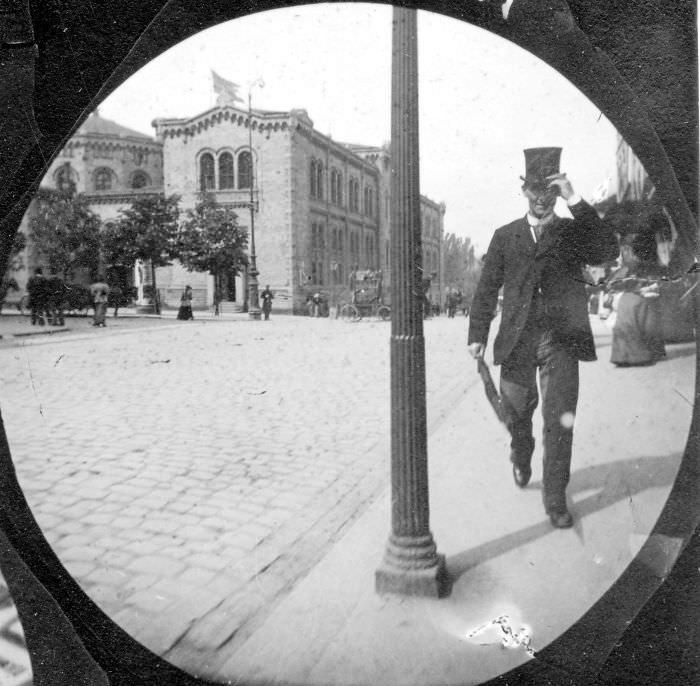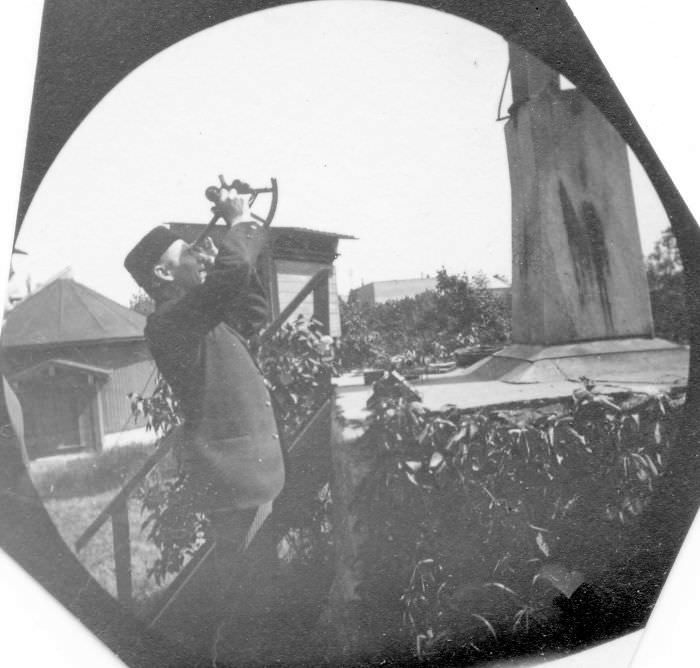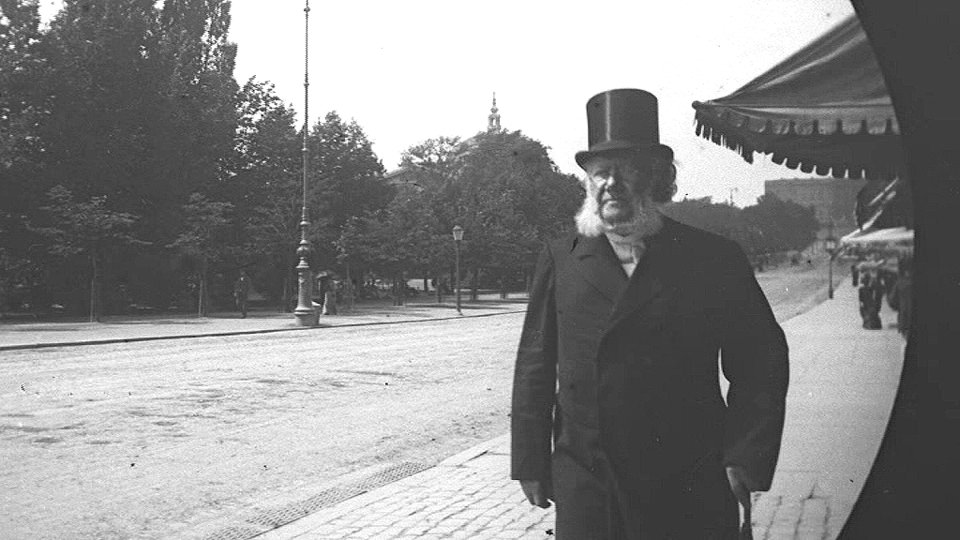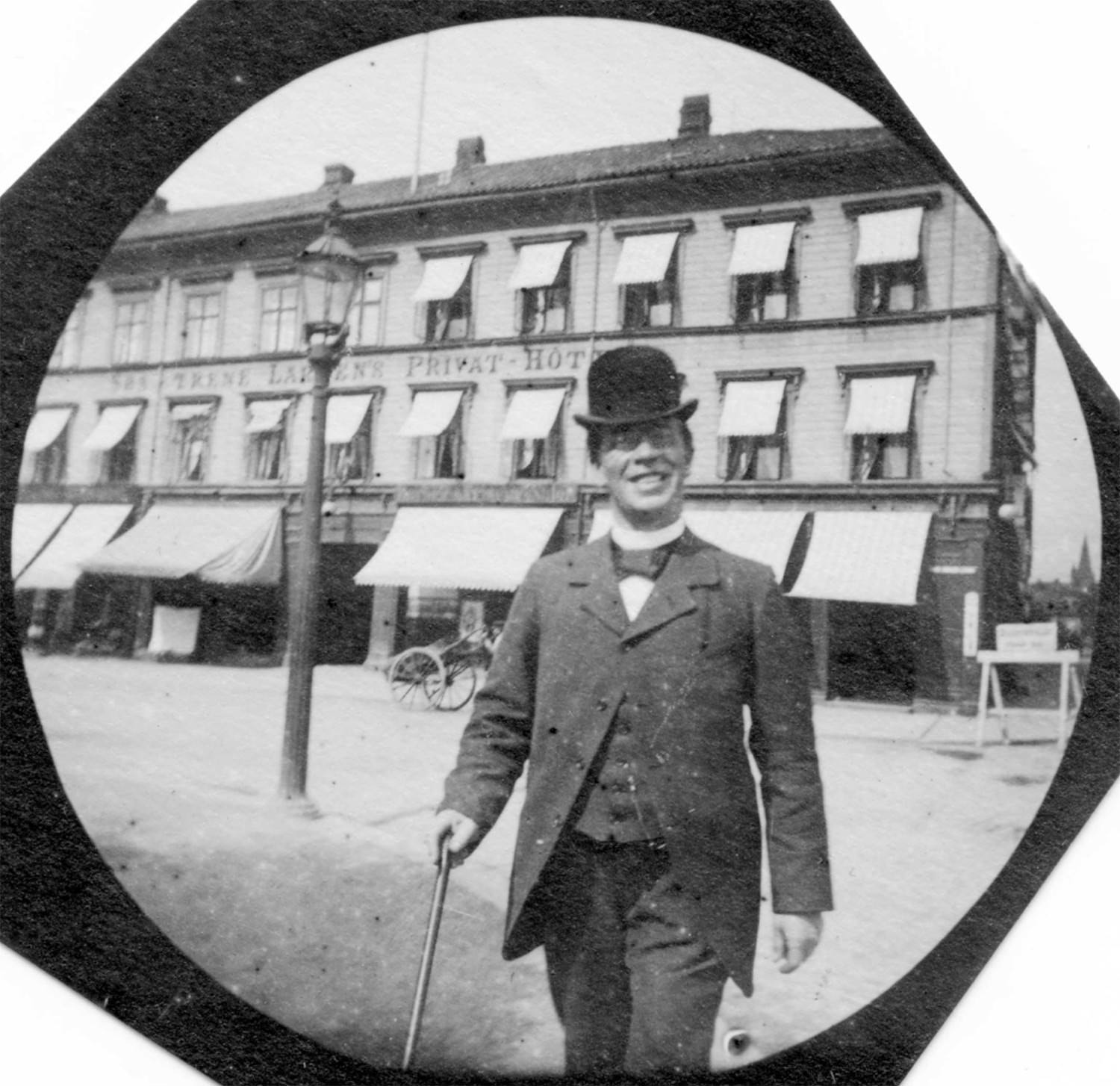19th Century Street Photography With a Spy Camera
In 1886 C. P. Stirn bought the rights to make a unique kind of vest pocket camera that was invented by Robert D. Gray and first produced by Western Electric Co. in New York. Rudolf Stirn lived in the German capital Berlin where he manufactured vest cameras for his brother C. P. Stirn.
From 1886 to 1888 15,000 examples of their Concealed Vest Camera were sold.
The camera had to be loaded with a round film plate, 14 cm or 17cm in diameter. The round brass body with the exposure dial (with or without clock hand) and the funnel type lens barrel gave it a unique appearance. Two main types were made, one for making four 6cm wide round exposures on round film plate with a diameter of 17cm, the other with smaller lens funnel, for making six 4cm wide round exposures on a round plate with a diameter of 14cm. This camera type fits not only in a vest pocket, but it can also be hidden in it so that the narrow lens opening looks through the vest pocket’s buttonhole.
Thus the camera got its popular type name “buttonhole camera”, but also a detective camera, spy camera, and last not least vest pocket camera. The cameras were marketed in the U.S. and Canada by Stirn & Lyon in New York.
The images here come from one such camera hidden in the buttonhole of Carl Størmer, a Norwegian mathematician and physicist who was at the time a 19-year-old student at the Royal Frederick University. Størmer strolled the streets of Oslo, greeting passersby and, unbeknownst to them, taking the portraits you see here, which show us people from the period in relaxed, active poses, going about their daily lives, “often smiling,” writes This is Colossal, “and perhaps caught off guard from the young student angling for the shot.”
The Concealed Vest Camera was invented by Robert D. Gray, notes Camerapedia. In 1886, C.P. Stirn bought the rights to the device, and his brother Rudolf manufactured them in Berlin.
The camera came in two sizes, “one for making four 6cm wide round exposures… the other with a smaller lens funnel, for making six 4cm wide round exposures.” Marketed by Stirn & Lyon in New York, the cameras sold by the tens of thousands.
Størmer’s own camera was the smaller version, as we learn from his comments to the St. Hallvard Journal in 1942: “I strolled down Carl Johan, found me a victim, greeted, got a gentle smile and pulled. Six images at a time and then I went home to switch [the] plate.” The future scientist, soon to be known for his work on number theory and his status as an authority on polar aurora, took around 500 such secret photographs. (See 484 of them at the Norwegian Folkemuseum site.) He even managed to get a shot of Henrik Ibsen, just above.
The Stirn Vest Camera joins a number of other early clandestine imaging devices, including a telescopic watch camera made in 1886 and a book camera from 1888. Spy cameras were refined over the years, becoming essential to espionage during two World Wars and the ensuing contest for global supremacy during the Cold War.
via Bored Panda / This is Colossal

